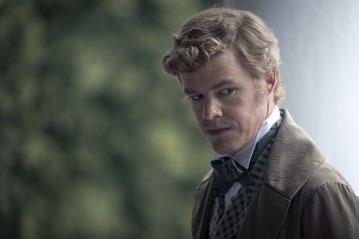
Priit & Olga Pärn
Luna Rossa
Men in Focus
by Kullar
Viimne & Jaan
Tootsen
Madli
Lääne
Tackles
Tough Topics



Luna Rossa
by Kullar
Viimne & Jaan
Tootsen
Madli
Lääne
Tackles
Tough Topics


Welcome to Estonian Film, where we invite you to enter the vibrant world of Estonian cinema. Our storytelling is built on collaboration, collective vision, and creative energy. Our cover star, Pääru Oja, is leading this issue. A captivating actor whose recent roles have firmly rooted him in the heart of our cinematic landscape, Pääru’s work reflects the passion that unites our film community, a shared drive that continues to move Estonian cinema forward while building stronger ties with our neighbours.
This issue also celebrates a new wave of young Estonian filmmakers, each with a fresh, uniquely local voice that we’re excited to share. Twin brothers Raul and Romet Esko, known as the Eskobros, bring humour and self-reflection to the screen in their debut film Two of Me, exploring the quirks of twinhood and the search for identity. Then there’s Meel Paliale, whose film Rolling Papers dives into the complexities of youth, bringing a raw, honest portrayal that resonates with local and international audiences.
Alongside these emerging talents, we’re proud to feature the work of established filmmakers like Madli Lääne, Kullar Viimne, Liina Triškina-Vanhatalo, and our acclaimed animators Priit and Olga Pärn, whose collective artistry enriches our cinema landscape. Each brings depth to our shared narrative, exploring themes rooted in our everyday lives yet universally relatable.
Collaboration with our friends in Latvia and Lithuania amplifies Estonia’s filmmaking efforts. Through the Tallinn Black Nights Film Festival (PÖFF) and Industry@Tallinn & Baltic Event, Estonian filmmakers gain opportunities to work alongside international creatives, sharing perspectives, resources, and stories that transcend borders. This year, PÖFF’s lineup showcases the best of Baltic cinema, with films that weave together personal stories and shared histories — revealing how our cultures intertwine while celebrating each unique voice.
In this edition of Estonian Film, we honour the spirit of collaboration that fuels Estonian and Baltic cinema. It’s a tribute to the filmmakers, the supporters, and the audiences who make every story possible. Join us in exploring a deeply personal and widely shared cinema, where each story reflects the unity, creativity, and collective vision of our film community.
Eda Koppel Editor in Chief


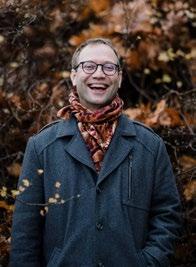
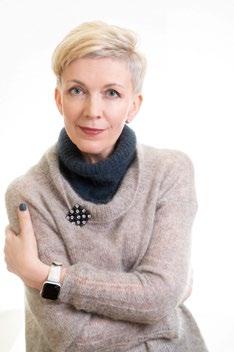
Estonian Film is published by the Tallinn Black Nights Film Festival
E-mail: info@poff.ee, I poff.ee
Editor in Chief: Eda Koppel
Contributors: Andrei Liimets, Kaspar Viilup, Tõnu Karjatse, Paul Emmet, Heilika Pikkov, Andres Mesikepp, Eliisa Pass, Tara Karajca, Vassilis Economou, Erle Kivilo, Mikk Granström, Signe Somelar-Erikson & Külli Hansen, Kristīne Matīsa, Ieva Šukytė, Egle Loor
Translation: Leena Tuisk, Leana Jalukse, Eda Koppel
Proofreading: Paul Emmet

The world premiere of Kullar Viimne’s documentary film Torn will take place in the brand-new PÖFF documentary competition programme.
By Heilika Pikkov Photos by Viktor Koshkin
�orn is your 15th documentary as a director. In the past, you mainly made films about women. ‘Portraitist of female characters’ was almost your trademark. However, your last two films – portraits of the sculptor Seaküla Simson, and Kalju, the main character of Torn - dive deep into the souls of men. Why such a thematic change of course?
It hasn’t been a conscious choice by any means, although I’ve noticed it myself. If everything goes as I plan, I will make another character-oriented portrait of a man, and then I will maybe expand my circle of subjects. I like to shoot in wide format, there is a visual magic and fairy tale in it, and, in this format, two people would actually fit very well in the frame. At the moment, those lonely characters of mine sometimes stray to the very edge of the frame in their difficult moments.
Where did Torn stem from?
For a long time, the working title of Torn was actually Man’s Pain, and in the be-
ginning I filmed three different men, because I wasn’t certain that a full-length film could be made from the story of only one man. The shooting period lasted for five years, and in the end it’s good that I didn’t try to squeeze these characters into one film, compare, or contrast them in any way. I felt a strong connection to the modest Kalju straight away.
Probably because you yourself are an introvert from Võru County?
True, I dare to identify as a strong introvert more and more, although there is hope that maybe in time I will somehow improve and become a joyful optimist.
How well do you know the physical and mental landscapes of South Estonia?
I have made quite a number of films, but not yet in my home region of Võrumaa. This area is familiar and close to me from my youth. I went to school in Tallinn at the age of 15, but I still consider myself a Võro person. The original trigger for making a film about Kalju was a very
personal thing that I am dissecting and undergoing myself through this movie. Although on a smaller scale than Kalju, because unlike him, I have been able to move on with my life. Although I’m still wondering how it is possible to come to terms with some things that really cannot be come to terms with.
Did being a father yourself play a role in making this film?
Yes, definitely. I think a lot of us make some sorts of promises on our road of development when we’re younger. Well, for example, if someone’s parents or grandparents are alcoholics, they promise themselves that I will never become an alcoholic. One of my promises was that I would raise my children myself. And when, about 15 years ago, while in a relationship, my partner got pregnant and decided to go away to her homeland, America, together with our child, this matter remained unresolved for me and I could not keep my promise. So, when I heard Kalju’s story, it clicked for me, and in parallel with making the film, I also dealt with my own trauma. What does it actually mean to a man, if you can’t raise your own child, even though you really want to? The mission of my film is to open the topic of growing up with children through a man’s

eyes, because we hear the stories of mothers, but not so much of fathers.
Kalju (“rock”) has a meaningful name in Estonian. He lives his solitary life as if in a cave. You also spent a lot of time there in this “rock cave”. Didn’t you feel a bit uncomfortable being so close to him?
I’m a weird enough person myself. I may not even notice where that line of normality runs. As a documentary filmmaker, you go to so many different worlds, you wander around, because that’s what gets you started and draws you along as a filmmaker. When you make a documentary, you get so close to who you are filming that the barriers disappear. It is not comparable to making a TV show, when you go to visit someone, have the crew move the furniture around to get that beautiful interview, and then, after drinking tea and eating cake, you hit the gas and drive back to town, where the editing room is already waiting. Kalju and I never got tired of each other. Or rather, Kalju never got tired of me. I already had my camera with me at our first meeting and I filmed Kalju picking up potatoes with his cool tools in the autumn. Later, he dug out his diaries and read passages from
When you make a documentary, you get so close to who you are filming that the barriers disappear.
1991, when he lost his daughter. These shots are also in the final film.
It seems that Kalju longs for a change in his life, but he does not have enough courage to take the specific steps towards it. How much did you, as a filmmaker, influence him to do something, even in communication with his now adult daughter?
There was no pushing from my side regarding his daughter. When I heard that she was coming to show her own recently born child to Kalju, my goal was to be there with the camera as invisibly as possible. Those were the most difficult moments in terms of filming, because how do you stick your camera between them when Kalju sees his grandchild for the first time?
What I really tried to motivate Kalju to do was to build this tower. I filmed for quite a few years so that he had not gotten a single log up on the hill. He just kept hauling the logs there, while the first ones already rotted. I knew that he had built three towers in his lifetime. So why couldn’t he build the fourth one now? To our delight, he finally did. The biggest and highest so far.
I have to admit that as a viewer of the film, I got frightened thinking about you high up there in the tower as a cameraman...
In addition to Kalju and me, there was also the sound guy up in the tower. We did some of the shots with a telescopic lift, and it was much scarier, because it swayed quite a bit in the wind. Filming
and operating the lift at the same time was quite a challenge. I got life insurance just in case.
There is something Finnish in your film. In some aspects, Kalju resembled Hannu, who was the main character in Juha Suonpää’s The Lynx Man. Hannu’s mission was clear - he wanted to protect lynxes from being slaughtered. What is Kalju’s mission? Simple and natural things. The things he lacks in life. Intimacy, hugs, raising children... And since he doesn’t actually come down from the top of his mountain, he has to make himself visible with a tower. Building the towers brings him attention, and guests who come to see them. I suppose everyone has their towers that we build in life. Kalju has his own tower, and my tower is this film.
Why did it take you six years to make this film, this tower?
All my film projects are quite vague at the beginning, I don’t know how to articulate them for my producer, much less win the trust of financiers. I usually go to ask for support when a large part of the work has already been done. In my case, some processes are simply very slow and need to settle. Now, if the Black Nights Film Festival had not selected our film in its competition programme, I would have definitely continued tinkering on it. Of course, the fact that I am a family man also plays a role in the whole matter, there are many social obligations and also the day job. I’m fragmented and that’s why filmmaking takes a long time.
As the cinematographer for all your films, have you ever thought of breaking your poetic visual stylemaybe even revisiting the Super VHS aesthetic you began with?
When I make a film, I think carefully about the audiovisual aspect. My visual style is minimalist, and the camera is mostly on a tripod. I know it might not be obvious, but I’m constantly in search of my visual language. These changes are more like micro-adjustments. The biggest breakthrough would be if I went on set with a different cinematographer, but I’m not ready for that just yet!
You have said that director Sulev Keedus has been your advisor when making films. You are experienced
enough now to be a mentor to another young filmmaker.
I have mentored some, but the most important thing for a young author is to find a producer who believes in his ideas. I found Erik Norkroos 20 years ago and we still work together. I wouldn’t be able to make films together with anyone else, we know each other’s strengths and weaknesses inside and out. In the final phase of the film, you can see especially clearly how important the team around you is. By this point, you are so tired yourself and just want to get rid of this burden, but the others help to dot the i’s. Polishing the film is extremely important, the stitches must not be left visible.
You became a documentarian on a bus, where you made your first documentary Quo vadis? about a preacher who happened to be on the bus. But
what has helped you to remain a documentary filmmaker 20 years later?
This is my way of self-realisation. When I make documentaries, I undergo such strong processes that I do not experience anywhere else in life or in other professions.
I last interviewed you 13 years ago and it ended like this: Currently, Kullar is studying to become a sailor at the Maritime Academy. A dream of a bigger kind is waiting to be fulfilledto get on long-distance ships to travel the seas of the world, carrying a camera as light luggage. What happened to that dream?
My family has become my biggest adventure. I don’t know if I am there in the role of captain, helmsman or sailor, that remains to be seen, but it has turned out to be more exciting than any sea voyage could ever be. EF

Tornis a lonely arborist who lives on top of a hill deep in the forest. As if carrying a punishment, he drags long logs and heavy stones to his hill, like Sisyphus once did. Once Kalju was in love, once he got married and once he had a lovely daughter whom he admired very much. But he was heartbroken when his wife left him and took their 4-year-old child with her. Time has passed, but pain has remained. When the daughter finally calls him and announces that she is expecting a child of her own, “The Rock” (that is what the name Kalju means) is confused. For the first time in his life, he goes through his old diaries and recordings to figure out what went wrong 30 years ago. Against all odds and despite his age, Kalju has not lost hope of finding new love. To attract potential candidates, Kalju is going to erect the highest observation tower in the region.
Director & DoP Kullar Viimne
Editors Mirjam Jegorov & Erik Norkroos
Editing Supervisors Mikael Opstrup & Tambet Tasuja
Composer Erki Pärnoja
Producer Erik Norkroos
Produced by Missing Pictures / Rühm Pluss Null
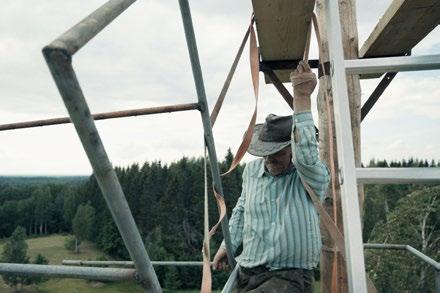


Priit and Olga Pärn’s new film Luna Rossa will be screened at PÖFF Shorts International Animation Competition. Tõnu Karjatse talked to Priit and Olga Pärn about the new film and the working process.
Photos by Viktor Koshkin
Luna Rossa is Priit and Olga Pärn’s first film after a 10 year break, Pilots on the Way Home was completed in 2014. In Luna Rossa we see new technical solutions, formally it’s a kind of collage of several previous animation techniques, and we can see collage even in terms of content.
PP: According to my principle every story deserves its own world. You have to take into account the level of abstraction, how close it is to realism. The story of this film starts with a character watching a security camera image. As a rule, the security camera is somewhere higher up. Thus, as the person being watched approaches the camera, the angle changes, the head gets big, the legs short. For a normal animator with usual techniques it is an impossible task. So we decided to use a motion capture system. There are several ways to do it, our method was that the actors wear motion sensor suits, and the actors’ movements were recorded on a computer. That gave us 3D puppets to create the main characters. It’s not the same as recording the actor’s movements on video and then redrawing them. This method gave us an opportunity to place the camera anywhere in the room and observe the character either from the ceiling above or from under the table. The original plan was to edit the film in the puppet phase and then redraw. Of course we had a lot of surprises when we started working on it, including negative ones, such as magnetic fields interference. So we did the final editing after the characters were redrawn.

He is an observer.
She plays the game. Why? Is there still a hint of forgotten Love in the air?
And the Moon? The Moon is just a witness. Still pale.
Screenwriter Priit Pärn
Directors, Art Directors, Editors
Priit Pärn, Olga Pärn
Producer Kalev Tamm
Co-producers Emmanuel-Alain Raynal, Pierre Baussaron
Produced by Eesti Joonisfilm, Miyu Productions
I don’t think we’ve used this technique before in Estonia?
OP: Indeed. For example, The Adventures of Tintin: The Secret of the Unicorn (2011), a Steven Spielberg film, is made with motion capture, it’s American of course. We haven’t used motion capture techniques in animation so far, neither in Scandinavia nor in the Baltic States.
PP: Our equipment was quite cheap, but we had terrific actors from the VAT Theatre – Karolin Jürise, Tanel Saar and Ago Soots. They performed physically the tasks that you usually have to do in animation. You see, an animator depicts optimal movement. For example, when I take a cup of coffee from the table, my hand moves smoothly to it, without any bending. When we processed this image, we discovered certain vibrations, or small errors.
OP: If you’re asking why drawing and why not 3D already, the significance for us is that by drawing over we can fix all kinds of mistakes and bugs. For example, Priit had to draw thousands of hands, even when we had the latest model of sensor-gloves, the result was still far from what we wanted.
PP: At times, the palm behaved as it pleased. But the development of the motion capture system is also heading for the result of modelling a real human being. However, this is where it gets interesting: if we perceive the result as a real human model, the animation loses its generalisability. In this case, the animation is no longer abstract. Our desire is to maintain this degree of generalisation. In a feature film, the viewer wants to believe what they see, wants to identify with someone, both the creator of the image and the spectator seek the same thing, they want to be convinced that it is real. With animation, the viewer subconsciously deconstructs what it means that they see. If animation wants to survive, this abstraction must be preserved.
OP: And it will. In our film, the most abstract art that is involved is theatre. For example, our characters have masks. It was an unexpected effect for us, that their faces don’t move, but they express emotions.
How much help would artificial intelligence tools provide? How much did you use it?
PP: Well like you said, there’s a lot of collage in the film. The backgrounds are collage. You could have done it by having the AI search tool look for a street in Naples. You snap a pavement somewhere, a facade of a house from another place and then you connect it with drawing. That’s how we actually worked.
OP: You know, the AI wasn’t smart enough for us. We needed it’s help, for example, to clean up a video reel. It couldn’t handle it, we had to do it manually with Photoshop, each frame separately. It can be much more help in future, but not now.
PP: For example, the frame is already in place but we put a red chili pod on the edge of the balcony. It doesn’t have to be there. AI won’t put it there. It doesn’t have a sense of humour. There are some certain elements of surprise in our films, whether it’s in
the script or on a visual level, but these are things that don’t come from direct logic.
OP: And we both feel that there’s a certain poetic depth to it, even in the installation of such details. For example, in the film there are psychologically loaded scenes between two people, which is actually very difficult to manage in animation. There are certain pauses in time - who takes the initiative, who follows, and when. Priit set this rhythm with the actors, and the drawing added the expressiveness.
If you look at the way the film starts, you might think it’s a spy story, but you say it’s a love story. Besides, the viewer isn’t given very precise instructions.
PP: Of course, she who’s being watched knows who’s watching her. The viewer can add the missing story. It would have been very easy to do it in such a way that everything is already clear, but it wouldn’t have been interesting for us. If you watch it closely, there are two kinds of people – the ones who are essential for the story, and the mute extras. The people who are standing on the street are generally grey, even transparent, and they’re the ones who are on that fateful plane afterwards. One of the protagonists, however, is inspired by leader of the Orchestra Italiano, conductor, but also the legendary director of television shows on RAI Uno.
OP: We’ve got three elements here – an anecdotal story that was on Priit’s mind, the music, and the characters. We knew the song Luna Rossa from a long time ago, sung by Gabriella Ferri, who is also one of the
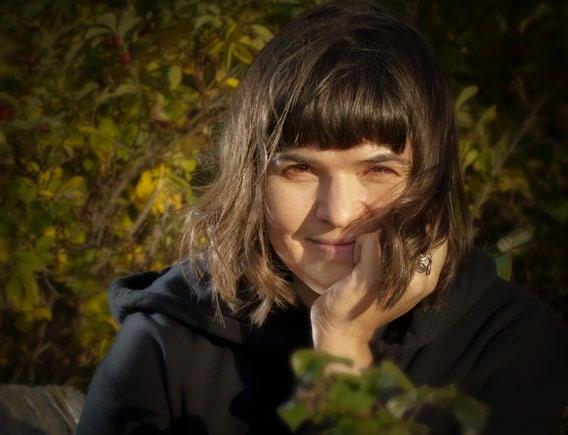
the
Academy of

and
from the Belorus-
in 2000, specializing in intaglio. Olga worked as an art director and sand animation specialist at Belarusfilm Studio from 1996 to 2003. After completing a film directing course at La Poudriere animation school in France, she worked as a storyboard artist in Paris. Since 2006, she has lived in Estonia, and has co-directed seven animated films with Priit Pärn at Eesti Joonisfilm Studio.


The people who are standing on the street are generally grey, even transparent, and they’re the ones who are on that fateful plane afterwards.
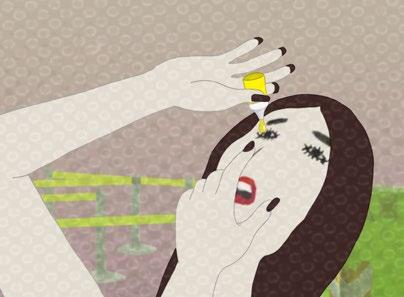

PRIIT PÄRN (b. 1946) is a renowned Estonian animator, artist, and educator. Originally trained as a biologist, Pärn transitioned to animation in 1976, working as an art director and animated film director at Tallinnfilm and later in Eesti Joonisfilm Studio. He has held over 30 solo exhibitions globally and taught at film schools across Europe. Pärn has run animation departments at the art universities in Tallinn and in Turku, and has received eight lifetime achievement awards from prestigious international festivals. A prolific creator, he has made 19 animated films and numerous commercials. Pärn has been a member of the European Film Academy since 2008.

characters in the film. By chance, I came across a video recording on the internet of Renzo Arbore’s orchestra performing; and the song was sung by Eddy Napoli and Francesca Schiavo. We had also dreamed of working with the VAT Theatre and Tanel Saar, who staged in theatre Priit’s animation The Breakfast on the Grass. Personally, I wanted to see how Priit works with actors, and when we found a recording of Eddy and Francesca singing the song, Priit said, Olga, these are our heroes. As you see, the characters’ faces are based on those of the Italian superstars. We had great assistance in this matter from 3D genius Vesse Veering. We constructed the settings from details of three cities – Naples, Paris and Bergamo. In Bergamo we had an exhibition and we took a lot of pictures there, and these we also used.
PP: The premiere of the film was in August in Conversano, in the south of Italy, and they were surprised that we hadn’t been to the south of Italy before, because it looked like their town.
OP: And we constructed this white, shining, sunny town in cold Estonia, during winter.
How did you share the tasks?
PP: There are specific tasks, but the boundaries are blurred. I’m writing the script, but we were constantly discussing it, so Olga was a sort of sparring partner all the time. The characters are also drawn by me, but the whole visual world, which is specific to the film, is the result of collaboration.
OP: Priit directed and worked with the actors. My job to record, systematise and number the scenes.
PP: Olga swims pretty well in the computer. At some point there were so many scenes that there was no way to keep track of them, and then Olga was needed.


OP: It was also the first time you did a drawing digitally.
PP: So, these puppets were made from the recorded models of the actors, and I had to draw the clothes on them. For example, the scene where Gabriella was in a leotard, you just had to draw a line around the doll. But if she has a moving textiles, it had to be drawn in the same way as in a normal animation. But the collaboration with the actors was really good, they grasped instantly what had to be done, and they offered their own variations on it. That’s how we got the final result. OP: Funny thing is that the movie started to communicate to us what it needed, this hasn’t happened before. For example, in the beginning we had sketches, a lot of graphic elements, textures and depth. When we saw what the animation looked like, how the characters moved, we realised we had to change it – the unusual angles required a lot of air. We even held air as one of the protagonists, because this is what creates the illusion. And there’s a lot of colour, the Italian azure sky and golden sand.

TK: And finally, on the church wall we find the poster “The Pärn’s World”. In Luna Rossa there are many references to previous films. Starting from the opening scene man entering the room, which brings to mind Triangle (1982), to the little reminder note “Leaving, turn off the light!”, which won the main prize at the Cannes Advertising Festival in 1988. So, for me, this film belongs to the Pärn’s world, it’s an extension or a deepening of it. Hence the question, where does this world go from here, is the technology we see in the film here to stay?
PP: I never know if I make another film. We produced it for four years and now we don’t want to think about making another one just yet. EF

The Tallinn Black Nights Film Festival (PÖFF) is setting a ground breaking precedent as one of the first film festivals in the world to adopt AI technology to enhance audience engagement.
By Mikk Granström
By integrating an AI-powered personal recommendation system, PÖFF is revolutionizing the festival experience, allowing viewers to navigate the festival’s extensive film offerings in a more personalized and efficient way. This innovative approach taps into AI’s ability to understand individual preferences, suggesting films tailored specifically to each attendee’s tastes. With over 550 films presented annually, festival-goers can now avoid the overwhelming task of manually browsing through the schedule and instead let the AI recommend films based on their interests, previous favourites, and unique tastes. This AI solution helps users not only discover new films but also select events from Industry@Tallinn & Baltic Event’s extensive conference and busi-

ness programs. Guests who attend our industry events will be able to describe their topics and interests to the AI, which will then make its recommendations on possible panels, events, workshops, etc. to attend. This simplifies the planning process, and saves the time it would take to work through the full programme.
PÖFF is also the first festival to provide such advanced AI-based assistance, making it a trailblazer in the global film festival scene. This AI system is not just a search tool but an interactive companion that communicates in multiple languages and offers insightful suggestions, making the festival more accessible to international audiences. With an expected increase in visitor numbers in its first year, the AI system is poised to bring substantial growth, media attention, and a more streamlined experience for festival attendees.
PÖFF’s AI will not only personalize recommendations but also optimize marketing efforts by better understanding audience preferences and reducing advertising waste. This leap into AI-driven festival experiences solidifies PÖFF’s position as one of the world’s most forward-thinking and innovative festivals.
Go and discover PÖFF AI at www.poff.ee and www.industry.poff.ee


RAUL & ROMET ESKO ´
Twin brothers Raul and Romet Esko have been dreaming of making movies ever since their mom bought them a video camera. Their film school short film Struck by Lightning won the National Competition of Tallinn Black Nights Film Festival (PÖFF Shorts) in November 2020, took home the Audience Award and was submitted to the Academy Awards (Oscars). Two of Me is their first feature film.
MEEL PALIALE is a filmmaker from Tallinn who has been making films since elementary school. In 2022, he graduated from the Estonian Academy of Arts with a BA in Photography. His first feature, Tree of Eternal Love (2022), premiered in the International Youth Competition Programme at the BNFF and was later invited to festivals such as Cottbus and Helsinki IFF.
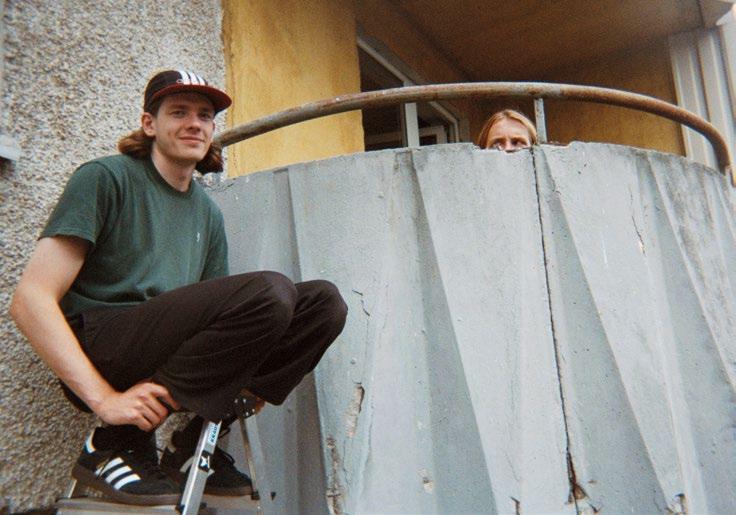
This autumn sees the premieres of two feature films by highly promising young Estonian directors. Brothers Raul and Romet Esko (25), collectively known as the Eskobros, debut with a semi-autobiographic comedy Two of Me, while Meel Paliale (26) follows his well- received Tree of Eternal Love with Rolling Papers.
By Andrei Liimets Photos by Magnar-Stig Virgo
The consumption habits of young people have changed, so there is less and less attention to long formats, while TikTok is leading the way. Why has a full-length feature film still been your aim?
RAUL: It’s the ultimate goal. Young people might not aspire to it, because it’s such a big thing to think about, but for a filmmaker the dream remains that you’ll be a real director once you make a feature film. We have made short films to practice, but the ultimate goal has always been to make full-length films. I would like to be like Michael Bay or James Cameron and they make feature films. Then you can compare yourself to them based on something.
MEEL: I really like the full-length format. Short films haven’t really suited me, even when I made them myself. I tried to make a full-length film in the format of a short film.
You started making films long before studying at the Baltic Film, Media and Arts School; while Meel has not attended film school. How important do you consider academic film education to be?
MEEL: I think the most important learning comes from doing. It may be beneficial to study something else alongside filmmaking, which is what I did. Ultimately, it depends on who you want to become. For cinematographers and sound designers, technical training is certainly useful. But as a director, you just need a strong vision. You can always get help from people with technical knowledge. The key is to watch as many films as possible, make your own, and read books.
RAUL: I think that when our films are released, there will be a good moment of comparison. I don´t think it is necessary to go to film school. Meel already made another film independently, and I wouldn’t say that ours is somehow more intelligent.
Yet you did attend BFM, what was the most important thing you learned?
RAUL: That a film must have a beginning, a middle and an end. (everyone laughs out loud – ed.)
ROMET: And that coffee cups should not be placed on camera boxes. No, in all seriousness, the film school gave us quite a lot – it was a good opportunity to experiment, make short films, get to know young cinematographers and producers. But in the end, the quality and the confidence in you are determined by what you do, not whether you went to school or not.
What makes a good director?
RAUL: Meel is a good director. He never gets nervous. A good director must be able to withstand stress. It is also important to be sure that if you are not satisfied with a take, you have to do it until you get a satisfactory result.
ROMET: For that, you have to know what you want. Rain Rannu (director and founder of Tallifornia, the producer of both Two of Me and Rolling Papers) doesn’t leave until he gets what he needed, and in the meantime he isn’t afraid to say to your face that it’s not what we want right now. You have to be able to decide quickly when you see that something is not working, and try another way.
MEEL: A good director achieves a great end result without causing unnecessary harm to others. It is very important to take care of the people you make a film with. If everyone is traumatized by the process, I don’t think it matters if the movie is great.
ROMET: But then again, if the film is shit, no one cares if it was nice while making it.
MEEL: Yes – you have to tick both boxes.
You have worked mostly with your friends and peers, but also directed very experienced and well-known actors. What is it like to direct older actors, does that give you any nerves?
RAUL: It seems to me that youth gives you an interesting advantage. Everyone thinks that young people know more about what it’s like to be young. We leverage that trust to bring our vision to life.

You have to be able to decide quickly when you see that something is not working, and try another way.
MEEL: I experienced some major impostor syndrome while working with older established actors on my debut film. For Rolling Papers, I chose not to cast any experienced actors. Working with my peers was much more enjoyable.
You mentioned it’s important for a director to watch a lot of films. How much do you relate to the Estonian film tradition?
ROMET: It’s shows in our film that we do watch Estonian films, but we don’t want to make a depressive Estonian drama where someone looks out of the window and says one sentence. But of course, there are very good Estonian films ‒ I like Mushrooming by Toomas Hussar, for example, and The Secret Lamb Autumn Ball by Veiko Õunpuu is also a good movie.
MEEL: I try to keep up with what has been done before and what is happening, but unfortunately, there are only a handful of Estonian movies that have been truly inspiring ‒ The Debt, for example, by Valdur Himbek, and Smoke Sauna Sisterhood by Anna Hints. However, I sense that things are improving. I believe that Estonians are quite good at making documentaries, but they have yet to master the art of narrative films.
How much do you consciously consider doing things differently compared to previous Estonian films?
RAUL: All the time. We would like to create a new wave. Why are Estonian films so boring? Someone could do it differently.
MEEL: I don’t consciously put an emphasis on this while making the film. Rather, I think about what kind of a film do I want to see myself, and then I go on to make such a film.
Tree of Eternal Love reminded me a lot of Wes Anderson, Twin Turbo takes its cues from the Fast and Furious franchise. How conscious are such references, or are they more of an unconscious influence?
RAUL: With Twin Turbo it was quite conscious, but in Two of Me the references are more of a mash of everything that we like.
MEEL: It’s common for a young filmmaker to imitate what you’ve seen, before finding your own style. I think that’s totally fine. The older you get, the more movies you’ve seen and made, the more influences you have. And when you put them together, something original is formed. If you only steal from a single place, everyone says ah, it is like that thing, but if you steal from ten places, it’s considered very original.
Meel, Rolling Papers is your second film. How different was that experience compared to filming your debut?
MEEL: I felt that I was able to make more conscious artistic choices, and was more confident in my vision. I trusted the process, knowing that I had already been through it once before, so there wasn’t much to worry about. However, I still experienced impostor syndrome. When you make a film on your own, it’s a personal project, no one knows about it. But with state funding and a large team to bring your vision to life, a concern arose about whether the film would be good enough.
Did the transition from short films to full-length films entail doing something in a new way, or is the process essentially the same?
RAUL: The structure is still quite similar, it’s just that the amount is bigger.
ROMET: A whole new level was the fact we also acted in Two of Us. We didn’t just make a feature film; we made a feature film about our own lives. It made the situation a little more difficult, but it was also exciting. When we make our next film, we’ll go up to a new level where we haven’t been.
Was it the plan all along to make a full-length debut based on your own lives?
RAUL: Right from the beginning, we knew we’d like to make a film about something we know very well. And that was: what is it like to be a twin? There have not been many films made by twin directors about twins, and we thought that no one else would portray it in the same way.
Your short films always have a strong layer of humour and fantasy. How much of Two of Me is really your story and how much did you make up?
RAUL: It’s a mixture. Sometimes small details from real life help make a bigger fictional framework believable. The structure, however, is still cinematic.
ROMET: At times, I do feel as if our naked butts are out there. The border disappears between the film and


Coming-of-age comedy, 90 minutes
Directors & Screenwriters Raul Esko, Romet Esko
Cinematographer: Toomas Tatar
Cast: Raul Esko, Romet Esko, Priit Pius, Märt
Pius, Amanda Hermiine Künnapas, Mirtel
Pohla, Rain Tolk, Reimo Sagor, Reket, Lil Till
Producers: Rain Rannu, Tõnu Hiielaid, Kirill Volkov
Produced by Tallifornia
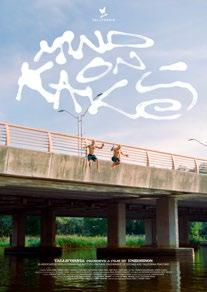
Under the pressure of meeting the expectations of film school, twin filmmakers Raul and Romet attempt to make a movie that will be their path to fame and glory. Everything gets more difficult when one of the brothers falls in love. It is a story about brotherhood, childhood and growing up through the eyes of twins.
real life, but it also remains a mystery, how much is real and how much is not.
And the quirky sense of humour that connects your films? Do you see yourself doing a classical drama at all, or how much do you even think about genre?
RAUL: I would rather prefer to make an action film next. There is no such bitter life experience as to make a drama.
ROMET: Maybe in twenty years.
You have made something sad though, the documentary film Struck by Lightning about the death of a friend.
ROMET: For that, some feeling has to arise, which is not there now. We still view films as entertainment. Entertaining people is also an important job.
Meel, do you look to entertain as well?
MEEL: My goal has never been to make a comedy or a funny movie. My films have just turned out that way. For Rolling Papers, the goal was to do something true to life, I didn’t even think about the genre. Life is multifaceted, it’s not just drama or comedy. I’m bothered by films that are dark throughout, because that’s not believable – even at the most tragic moment in life, something funny happens or someone says something stupid.
The description of Rolling Papers begins with the fact that it is a film about young people who do not know what to do with their lives. How much of yourself is in there?
MEEL: There’s a lot of me in this film, and I relate to what the Eskos said. I was interested in blending reality and fiction. All the characters are inspired by real people, and many conversations actually happened in real life. The story is fictional, but everything around it is real. I’m lucky that I knew from a very young age I wanted to make films. This desire to create movies has kept larger existential concerns at bay, although I still feel them at times. If I didn’t make films, I would probably be very lost. I sense a collective confusion around us, which I tried to capture.
A big part of the Eskobros brand is that you are twins. To what extent do you envision going your own way, or is everything too symbiotic for that?
RAUL: So far, we have made the most of this gift the universe has given us. 0.03% of people in Estonia are identical twins so let’s milk it to the fullest! It’s cool, it’s easier to stand out.
ROMET: Let’s take advantage of it. Two of Me also speaks about a difficult period when twins start to grow up and inevitably have to become independent. The first time we met, the Pius brothers (a famous pair of actors who are also twin brothers and have roles in Two of Me – ed.), they asked us if we lived together.


Youth comedy-drama, 98 minutes
Director & Screenwriter Meel Paliale
Story by Meel Paliale & Urmet Piiling
Cinematographer Markus Mikk
Cast Mihkel Kuusk, Karl Birnbaum, Maria Helena Seppik, Edgar Vunš
Producers Rain Rannu, Tõnu Hiielaid
Produced by Tallifornia

Sebastian, working as a store clerk, finds his ordinary workday shaken up when he meets Silo, a free-spirited wanderer. Together, they smoke weed and dream of a one-way ticket to Brazil.
We still had a bunk bed back then. They laughed and said: wait until you get girlfriends, then you will know what the next issue will be. But as far as I know, they still call each other every day. I think we will continue to do so as well.
RAUL: We may do different things in the future, but our strength lies in our differences, which complement each other. The ultimate goal is the same: to become world-famous directors.
ROMET: Wait, you want to become a world-famous director? (both laugh – ed.)
As a director, you need a strong vision.
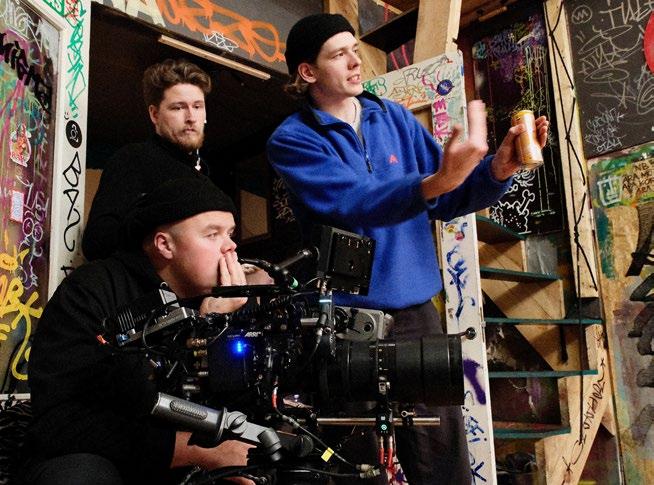
RAUL: I want to bring an Oscar to Estonia, that’s the dream!
Where are you heading next, where do you want to end up?
RAUL: The Invisible Fight was a very good film and showed how Estonian films are a little more arthouse than American ones. We would like to take that spirit of Estonia and make films abroad on a larger scale.
ROMET: I would just like to make a lot of films.
What about, for example, if you get offered to make a Marvel movie or a franchise film, where there are a lot of resources available, but it’s difficult to put your own stamp on it?
ROMET: I don’t know. Marvel? Well, if you’re offering, we may just as well do it… (both laugh – ed.)
MEEL: I would just like to make films that resonate. I don’t necessarily have great ambitions abroad. As an Estonian, I would like to contribute to Estonian culture. But above all, the goal is to develop myself and make better films. External recognition is secondary. It’s nice if that comes, but it is not a goal in itself. EF
Fresh from her Special Jury Award for Best Screenwriter at the Warsaw Film Festival, where she premiered her latest film, Lioness – her second film to bow at that festival, director Liina Triškina-Vanhatalo talks about how the film, now screening in the Baltic Competition at PÖFF, will make us question our idea, perception and definition of love.
By Tara Karajica Photo by Vallo Kruuser
What prompted you to make Lioness?
I think inspiration is seldom just one thing, or that there is seldom just one reason. Firstly, behind everything is probably my excessive interest in family relations, and how these influence everything in our lives and societies. In a way, I think these are the most important relationships a human being has. Secondly, there come the more specific inspiration sources, and for Lioness, it started around five years ago. There was a very active, very large, violent youth gang in the centre of Tallinn, causing a lot of trouble, and it was all over the media. The police and the politicians – everybody – tried to do something. The discussion on this issue was about upbringing, and especially on social media people crucified the parents,
saying that in ‘good families’ such things don’t happen.
Then, there was one journalist who got in touch with three parents whose kids were in this gang, and interviewed them. This image of these parents – the way they described their lives, how they admitted that they are far from perfect parents. But they are really trying their best, and how they take turns and drive around the city every night and try to find the gang and call the police, and the police comes and dismantles the gang, and then tomorrow it happens again – along with the emotions and mood that these parents had, somehow stuck with me. With the help of this journalist, I then met one of these parents. It was a mother whose son had been on this very bad path for three years or even longer, and we talked for a couple of hours about how she had tried everything, from a psychia-


(born 1976) studied humanities at the University of Tallinn and started her film studies in 1998 at the European Film College in Denmark, followed by the Film and Audiovisual School of Catalunya. Her main interest was documentary filmmaking. Since then she has worked on dozens of documentaries, as a director and editor. She has also taught editing at the Baltic Film and Media School. In parallel with documentaries, she started to work as script-continuity for fiction features and on 2016 ended up writing her own first script to reach the screen, the social drama Take It Or Leave It. The film premiered in October 2018 at Warsaw IFF. It was selected as the Estonian submission for the Academy Awards (Best Foreign Film). Lioness is her second feature.
trist to special schools, and she, every once in a while, said “I know I should just lock him up, but I can’t.” Then I thought: “But in film you can!” So, this is how this central idea and leitmotiv were born.
Lioness won the Best Project Award in the Baltic Event Co-Production Award category at the 2021 Industry@Tallinn & Baltic Event. Can you talk about that part of the development process of the film, and what this award meant for the project going forward?
At that point, we already had the shooting script, mood boards, most important ideas, style, DOP and main cast in place, when we participated in Baltic Event. But we found our German co-producer there. The Latvian co-producer, Guntis Trekteris, knew Ivo [Felt] from before. But, yes, the German co-producer (Sebastian Weyland of Heimathafen Film] approached us there, and this is how Lioness’ financing was put together. So, of course, it meant a lot. Also, this recognition gave us confidence that this story could also reach international audiences.
This is a film where the parents take centre stage, and it shows the difficulties in our fast-paced daily lives, in finding a balance between work and family life, and finding time to simply be with our children. Can you elaborate on that?
I agree, the fast-pace and high demands in every aspect of our lives somehow contribute to the fact that there’s maybe less time for parenting. But, for me, the main question is love, and its meaning: How should a parent love? How should it look like in practice? How should it feel for the child, for the loved one? Do we know how to love? Is it something constant? Or, is it something that should develop and change all the time, and are we
aware of that? Because I think that’s the most important thing. I think that all the practical things can feel very hollow when there’s no love. Love is something that we tend to take for granted. Also, as parents, we think: “Of course, I love my child. What kind of question is that?” But do we ever ask ourselves whether the child knows and feels it?
A very good question. Also tied to this are mental health issues, as a consequence of all the above. It’s not easy for everyone involved. This is a very important issue today, not only for parents, but for children as well. Can you touch upon that? It’s always the question of which came
I think that all the practical things can feel very hollow when there’s no love. Love is something that we tend to take for granted .

first – the egg or the chicken? Does the question of mental health come first, and then you are somehow incapable of giving and receiving love? Or, is it the other way around, and with the lack of love you develop mental health issues? I don’t know. Probably, unfortunately, there is no one simple answer to that.
It is also a story of resilience. Helena is a lioness. She is fighting for her kid, just like any lioness would fight for her lion cub. How would you describe her? It’s exactly what I had in mind – Helena does what she thinks she has to do, even though it might be illegal, and even though we might question whether it’s the right thing to do and whether she should have done something else a long time ago. She’s a woman of action. But talking about feelings and emotions is a much more difficult task for her. Somebody asked me whether she’s a positive or a negative character. I think she’s a controversial character that I am very happy with.
How has motherhood informed this particular film? Do you believe this is a film for parents?
I consider motherhood my most important role in life. It’s there every day, and every day I need to make choices and act accordingly. My daughter is not a teenager yet, but I think I tend to, subconsciously maybe, use my subjects to deal with the biggest fears I have in an artistic form. So, fear about me not being a good enough mother, fear about how my daughter survives this whole social pressure… And, somehow, I think making films helps me deal with my own fears.
I am convinced it’s a film for parents, because now that I’ve talked to many people about the film, and have had quite a lot of feedback, it’s definitely the parents who are the most affected. Parents of different ages, different sexes. But also quite a lot of young people have gone to see it, and I got very emotional feedback from sixteen, seventeen-year-olds who, of course, see this story from their own perspective, and somehow also seem to be quite touched. It seems the film helps them see their parents from a different angle, and maybe also see more clearly that it “takes two to tango,” meaning the child also has their role and responsibilities.



The film’s style reflects Helena’s state of mind. Would you agree with that?
Yes, I agree. It was our intention to balance between cold rationality and sensitive madness. It shows perhaps an Estonian way of being – the bigger the trouble and the more there is at stake, the calmer and more still and less talkative we become. The style of Lioness is Estonian-noir, I would say.
Your previous film, Take It or Leave It, was the Estonian Oscar Candidate in 2019. How has this achievement influenced your career?
It definitely helped us move the film in a broader direction because it got more attention and it travelled maybe more than it would have without it. It also attracted more local audiences to the cinema, I think. And probably helped funding the international co-production of my next film Lioness
How do you see Estonian film now? I think we are in quite a good place. What I like about our film culture now is that we have many different films, many different genres and authors. I think this is a big privilege and maybe even a small miracle, that we, as such a
Psychological thriller / drama, 104 min
When a 15-year-old rebellious Stefi goes missing, her mother Helena has nothing left to lose anymore –why cling to sanity when madness offers a chance for reconciliation and love?
Director & Scriptwriter
Liina Triškina-Vanhatalo
DoP Erik Põllumaa
Cast Katariina Unt, Teele Piibemann, Ivo Uukkivi
Producer Ivo Felt
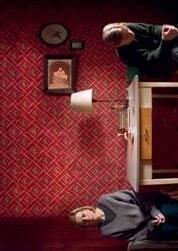
Produced by Allfilm (EE), Heimathafen Film & Media GmbH (DE), Ego Media (LV)
small country, are able to do such different things. What I am especially happy about is that we are not telling our stories, making films and looking at ourselves from a sort of tourist point of view; we are not especially stressing our more exotic features like the postSoviet or Nordic element. And maybe this is why Estonian films are quite popular also among local audiences; they can identify with the stories and characters on the screen.
What about women in film in Estonia?
Female directors are a normality in Estonia. But one thing can be seen: the smaller the budget, the more there are female directors meaning there are more women doing shorts, experimental and documentary films then features. This tendency can be seen in our society as a whole –less paid professions like teachers, nurses etc are considered the “female professions”. But then again one exceptional thing can be seen in Estonian film - there are a lot of high rank female producers. And another thing that I am proud of is that Estonian female directors are not expected to tackle “just” female issues and stories. We are free to choose from single fathers to UFOs. Isn’t that nice? EF

Pääru Oja’s filmography is filled with significant roles – Rupi in Veiko Õunpuu’s The Last Ones, and title character Mihkel in the Icelandic thriller Mihkel to name a few -, but he really carries the load in the new movie The Shadow, portraying the Estonian poet Juhan Liiv.
By Kaspar Viilup Photos by Rebeca Rosalie Parbus
We meet with Pääru Oja during the time when he is busy with rehearsals of the theatrical production Kullervo, directed by Aare Toikka. This is a good chance to – besides The Shadow – look at his career as a whole, and also talk about both the good and the bad in Estonian theatre and film.
Do you have enough work in the theatre right now, or would you like to do more?
I’d say I have enough work for the foreseeable future.

Could you elaborate? Do you like to work all the time, or do you also take some time off?
Well, when a person works all the time, they want to have some time to breathe, but when the time comes and you’re sitting on your hands, a certain fear creeps in – isn’t it time for me to work again? It is how it is.
When you started getting more work on the international stage four years ago, you gave up your contract as an actor in the Estonian Drama Theatre. Have you had any regrets? No.
You wouldn’t want to be a part of any theatre troupe in Estonia?
Not right now. I think that if you have work then it is always better to be a freelancer, both economically and also from the viewpoint of staying fresh as an actor. As a freelancer you see so many different troupes and collaborations, but if you stay put in one theatre, it’s inevitable that you are always surrounded by the same people, the same thoughts and stories.
How do you divide yourself between film and theatre? Or does it come naturally for you?
It comes naturally, I don’t even know how explain. If the project is interesting to me, then I will take the part. As an actor I don’t differentiate between these two.
Don’t you think you are somehow different as a film actor than when you are on the theatre stage?
I don’t.
What do you think about the discussion that sometimes comes up in Estonia, that a film actor sometimes comes off as a stage actor? It is often said judgmentally.
If we are talking about an actor being theatrical, then I have never seen an actor more theatrical than Robert de Niro …
In essence, acting can be either engaging of dull; actually not everything depends on acting, but on hundreds of other things, especially when it comes to film. How it is shot, how it is edited, the soundtrack used, and so on.
Do you find yourself missing the theatre stage after acting in three movies and two TV series in a row? Or do you want to act in movies for a change, after being in many theatre productions?
I have had some feelings of that sort, but luckily I’ve had the chance to do both. I remember the time when I was doing an American TV series, and was suddenly longing to do a two-person stage production for an audience of about fifty. To work at my own pace on something small.
When you were acting in these big American projects, didn’t you get the urge to move to Los Angeles and start searching for your place in that industry?
No, I have never had that urge. It is ok to go abroad, but I only see myself living here in Estonia.
What don’t you like about these big projects? A lot of people dream about being part of the huge American film industry.
I don’t even know. There’s a lot that I do like about these projects, but the production is so massive, your artistic freedom is restricted, and also the focus there is on the money.


Do you also see acting as a money making machine?
Well, yes, it is what I do for living.
But, philosophically speaking, do you think of acting as a job?
Of course I do.
You wouldn’t work as an actor if you had a lot of money?
That would be terrible – I would probably be too lazy to do anything. Paradoxically, I often find happiness in the projects that don’t seem like much in the beginning. You think to yourself, ok, I will do it, although it will probably fail, but in the end it turns out really good. I’m afraid I wouldn’t work as an actor, but would my life be happier for it? I don’t believe it would.
Do you think that over the years you’ve started to look for something different in acting? I have.
What are you looking for now?
Truth. Always the truth. I don’t think it’s the form that matters to me, I’m more interested in the person in the middle of all these things.
For instance, I don’t see much value in moulding Shakespeare into a modern form. We still do it in stockings, but maybe it’s our words and actions that
Juhan Liiv, a struggling poet and an unlikely detective, solves gruesome murder cases in Estonia, the “Wild West” of the crumbling Russian Empire in the 1890s. Investigations take him to miserable dwellings of the local Estonian peasants, luxurious castles of German nobility that have sworn allegiance to the Czar, and to the depths of ancient forests where witchcraft is still practiced. Juhan is fighting crime and his own inner demons. He is considered mad and pronounced crazy. But by standing for justice and truth, at the end of the day, he is the sanest of them all.
Crime, thriller, 94 min
Screenwriter Indrek Hargla
Director Jaak Kilmi
DoP Mihkel Soe, E.S.C
Cast Pääru Oja, Alice Siil, Rain Simmul, Lena Barbara Luhse, Karol Kuntsel, Kersti Heinloo
etc
Producers Kristian Taska, Tanel Tatter, Veiko Esken, Armin Karu
carry the sense of familiarity. Humans haven’t changed that much over these hundreds of years. Forcefully looking for a new form just to look for it, is something that bothers me as a spectator.
Did you get any closer to finding that truth while in America?
(long pause) No. Not that truth. But I believe I found some other truths.
But how different is it for you to play in an Estonian series, compared to, for example, actig in a Finnish one?
I like the fact that in Finland I’m always the outsider who has to prove himself. But while working there, I’ve had a feeling that they know something that we here don’t. Maybe it is my fantasy about exotic Finland – a Nordic country, its serene people, and language even more beautiful than our own that has been marred and shortened in time.
Hasn’t acting in Finnish movies destroyed that exoticness?
No it hasn’t. All the Finnish actors who I have become friends with are role models to me. I look up to them. Finnish actors are not afraid to embody feelings. It seems to me that here in Estonia we are, in a way, afraid to do that. Somehow we have become stuck in this notion that a stony face adds a special value of


Produced by Taska Film, Apollo Film Productions, HansaFilm, Reede

some kind, be it in film or on the stage. Denzel Washington once said, one needs to do only as much as needed. But if you are not doing anything, you also don’t want anything.
I am anyway more critical when it comes to how things are done Estonia, that’s just how it is – these are my brothers and sisters who are working here. I see them through a magnifying glass.
Is there something that you never want to do in theatre and film?
Porn. Both literally and metaphorically. I think the human body is being exploited everywhere.
But is it ok to take your pants off in a film and on the stage?
That is what I am talking about. You don’t need courage to bare your body. The dare is to bare your soul.
You’ve had a lot of daring and crazy roles, for instance Juha-Pekka Valkeapää in Hit Big quite recently. You do like to push the limits, don’t you?
Of course, and I like to make it fun for myself. I don’t care to see these stony faces anymore, and I also don’t want to do it myself. I want to act in films that I myself would like to see.
Have there been any movies where you have played, but do not want to watch later?
Of course there have been, but I think these are not the movies you are thinking about.
What went through your mind when you got the offer to play Juhan Liiv?
The first offer came a long time ago, while I was still studying in the Estonian Academy of Music and Theatre. It was supposed to be a TV series, but then it stayed a plan. A while ago producer Tanel Tatter mentioned it again, and even then it was an idea for the future, but from there things slowly started moving, until it was suddenly here.
I have to say, I did feel in awe and still do. Juhan Liiv is larger than life. We find him on every corner, I see it now more clearly than ever. Name one Estonian poet that has not been in some way influenced by him.
But when the project came closer, and it occurred that Juhan Liiv could be a detective of sorts, what were your thoughts then?
That was the plan already ten years ago. But how do I feel about it now? I think that when something is still alive in the culture, there is nothing you can’t do with it. The problem arises, when people start looking at how the breeches were fastened, but then someone tells you that this is definitely not the way they should be tied, and that the Muhu folk costumes should have this exact pattern. It means that these things are dead and someone needs to use archives to check these things up. These things belong to the museum.
This movie is our statement that Juhan Liiv is very much alive, and we can have all sorts of fun with him. For God’s sake, they have had all sorts of fun with him

I have seen this happen to people in the theatre world , where nobody cared about them while they were alive, but everyone was their best friend after they died.
Have you ever been working on a project and thought that you shouldn’t have taken the part?
You know, I don’t think I’ve ever felt like that, because how else will you grow as an actor, if not by doing different things?
Do you have any dream roles that you would love to play? Have you played Hamlet?
I haven’t played the part of Hamlet, but I have played some so-called Hamlets.
No, I don’t have a dream role – you find them during the rehearsals and it happens somehow unexpectedly. Lucky chances you didn’t know you wanted.
But would you like to play Hamlet?
I could try, but I haven’t really thought about it … I really loved Mel Gibson’s Hamlet.
in the theatre. Because what do we really know about Juhan Liiv?
The whole national romanticistic aura that surrounds him, came to be after his death. Isn’t this a lesson for us to recognise other Juhan Liivs during our lifetime, instead of letting another great Estonian poet die and then begin stripping him of his clothes and sharing among ourselves, declaring this coat to be mine and that one to be mine. I have seen this happen to people in the theatre world, where nobody cared about them while they were alive, but everyone was their best friend after they died.
You went quite deep into that role. I tried to do my best, so that I could walk out of the premiere feeling good. I tried to tap into everything that I can do.
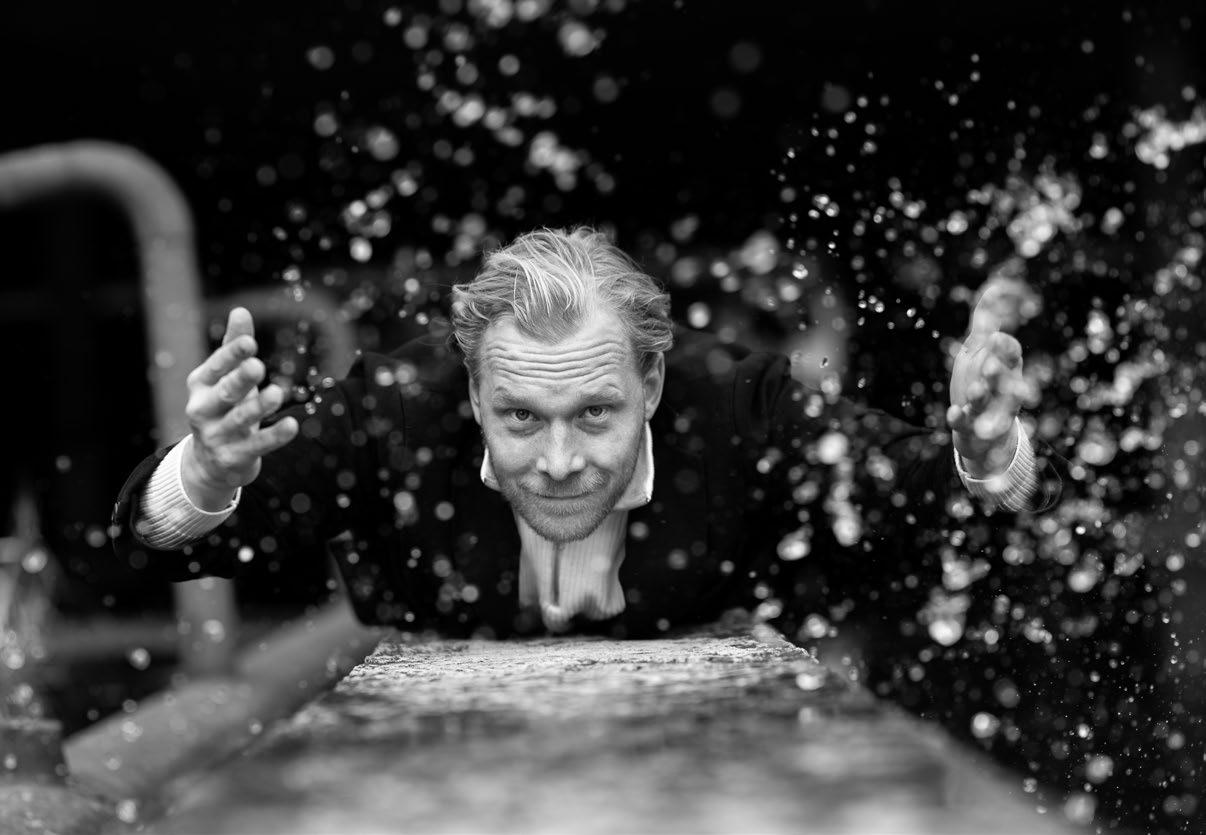
Let me put it this way. How difficult was it for you to come out of the Liiv role?
I don’t have a problem with that at all.
None at all?
I think this is a show-off thing to say. I really don’t believe in that.
So it is not a problem for you to come out of a role?
I truly believe that it is not a problem for anyone, otherwise it would be classified as a mental health issue. Stage actors know that when the performance ends, the lights go down and it is time to take a bow, then all that was is already gone.
As Hamlet said: And all for nothing! For Hecuba!
What’s Hecuba to him, or he to Hecuba, That he should weep for her?
What do you think of the Estonian film as a whole? How is life going for the Estonian film?
I think life is good for the Estonian film. Our film school is getting better and better, and I am happy that my partner is studying there and I can see how great it
is, and the teachers there are excellent. I am very happy for the Estonian film. And it is only getting better.
If we are not talking only about the Estonian film, then what are you looking for in the movies? What excites you?
The American movies from the 1970s are somehow very close to my heart. It was like jazz fusion, with so many different things put together, so you could always discover something new. The Marvel model wasn’t so clearly developed back then. But again – if one set of rules becomes an issue to be quarrelled over, then its time is already up. And it belongs behind the glass in a museum.
Just a short while ago I watched a movie that I remembered from my childhood, and that I had also searched for before, but to no avail. I was quite young, and I saw a western on TV. It haunted me for a long time. I remember I cried for days, thinking about that movie. Later I wanted to watch it again, but I had no idea where I could find it. When I got older, I started to look at the memory as being a young boy’s foolishness. Then my partner was handed a list of mandatory movies to watch. And I saw it again: Butch Cassidy and the Sundance Kid. And it wasn’t a young boy’s foolishness! This movie is really congenial. EF


Signe Somelar-Erikson and Külli Hansen talk to the young and ambitious producer Sander Lebrecht about filmmaking possibilities in South Estonia.
By Signe Somelar-Erikson & Külli Hansen
Sby Virge Viertek
ander, you were born in Võru, studied at Tallinn University’s Baltic Film, Media, Arts, and Communication School, and now you are back in Tartu. Tell us how you got into filmmaking and why you came back to Tartu?
After my time in the military, I began studying cyber-physical systems engineering. Alongside my studies, I also worked at a dance school. At one point, I started looking for ways to combine different fields, and while editing a dance video, I had my “Eureka!” moment: I discovered filmmaking.
I was born in Võru and went to Tallinn primarily for my studies, and it was natural to stay there afterward, as most of the film industry is located in the capital. However, my heart was still drawn back to Tartu, though I didn’t dare to make that decision just yet. That changed the day our daughter Elaysa was born. We’ve lived in Tartu for five months now, and I can say that it was the second-best decision I’ve ever made. The best was asking my wife to marry me!
You’ve been involved in various productions, including Tenet (2020) and Omerta 6/12 (2021), but your student film My Dear Corpses has been your most successful so far, winning an Oscar at the Student Academy Awards in 2020.
What impact did this have on you?
When our film won the Student Oscar, I was just getting started. Normally, student films only reach teachers and friends, but My Dear

Corpses gained international attention. The award gave me the opportunity to delve into the intricacies of international film distribution and funding.
You’ve worked as a producer, director, screenwriter, production manager, and location coordinator. Is it common?
The small size and fast pace of our film industry often require people to take on different roles. Although I’ve tried my hand in various areas, my primary passion is producing. Producers are often the only ones who stay with a project from start to finish. It means having the ability to understand what people might want to watch 5-10 years from now, leading a team to the finish line, and also having the capability to sell the film to the audience once it’s completed. It’s quite a challenge, but that makes the process all the more enjoyable.
Hollywood location scouts who visited Southern Estonia in the summer of 2023 said the area is intriguing for filmmaking for many reasons, from Soviet-era architecture to diverse natural landscapes and unique cultural elements. Film critic Tristan Priimägi has noted that filmmakers come to Estonia seeking exoticism and marginality; no one comes here to film normalcy. They’re looking for something odd, and that could be our trademark. Do you see that in South Estonia? Oddness seem to be valuable niche in a globalized world because it offers something fresh. The film Smoke Sauna Sisterhood, shot in Võru county and based on the regions’ smoke sauna tradition, is a prime example. 8 Views of Lake Biwa, Estonia’s Oscar nominee for 2025, was largely filmed by Lake Peipsi, where a unique blend of cultures can be seen – something hard to find elsewhere in Estonia. Authenticity, natural diversity – all can be found here. South Estonia is like the bottom of the ocean or the surface of the moon –full of hidden treasures waiting to be explored.
Region: South - Estonia (Jõgeva, Tartu, Põlva, Valga, and Võru counties)
Support intencity: up to 35% of eligible expenses in the region tartufilmfund.ee
What are your professional plans in Tartu?
I want to make Tartu the new film capital of Estonia! There’s a growing pool of professional film crews here, along with supporting industries: equipment rental, film studio, location mapping, etc. When talking to filmmakers, many express a desire to move out of Tallinn, but the film industry’s capital-centric nature holds them back. I’m sure that will change.
You’re also leading the development of a film studio in Tartu – why did you take on this project?
A film studio is like a landmark that shows we’re taking the film industry seriously. Whether or not foreign partners bring their projects here partly depends on having a studio available. The factory hall at Tartu’s Comb Factory can already be used as a studio. The plan is to establish supporting facilities for makeup and costumes, as well as production offices and spaces for equipment rental.
What value do you see in the Tartu Film Fund?
The greatest value, for me, lies in the fast communication and willingness to help find local partners or people with various skills for film shoots. The people at the Tartu Film Fund are constantly ready to communicate with filmmakers, organize events, and raise awareness – that’s a huge asset because the film industry largely relies on personal relationships. EF


In Jungle Law, director Madli Lääne tackles sexual assault through the eyes of a trio of minors playing on the beach. With the film gathering awards on the festival circuit, Lääne shares how she sought to put a delicate spin on a thorny issue.
By Andrei Liimets Photos by Virge Viertek
What was the starting point for you where the idea for Jungle Law began to develop from?
There were many impulses. I studied in the United States and returned to Estonia in 2017, but I continued to follow what was happening in the US. Donald Trump had come to power, and I remember sitting up all night watching the Kavanaugh vs. Ford sexual assault hearings. My first reaction was wild anger at how Kavanaugh interpreted the situation.
At the same time, I was reading a book I Never Called It Rape – a survey among American college students in the 1980s, which showed that only 27% of women saw themselves as rape victims, although their sexual assault met the legal definition of rape. 84% of rapists didn’t even realize they were committing a violent act. The understanding back then was roughly, that a rapist is a stranger who jumps out of a bush in the dark with a mask on, not someone you knew.

The final version of the script was inspired by a true event that circulated in the Estonian media – a violent oral intercourse as a form of punishment between teenage friends. I became interested in how such a situation can even happen.
I can also say from my own experience that you can sometimes agree with an intimate situation, but not under those conditions and in such a manner. It triggered the thought in me that I don’t want to tell the story of a woman as a victim and a man as a perpetrator, but rather the gray area where both – or the entire trio in the film – give each other impulses and twist the situation in a way that in the end, we can’t even determine where it started, who is to blame, and who suffered the most.
The Kavanaugh hearings is a very interesting starting point. Many directors try to avoid politics. How important is it for you to fit into a wider social framework?
When I wrote the script it was the peak of the #MeToo movement and many confessional stories emerged. Our biggest fear with producer Marianne Ostrat was that my script can be interpreted in many ways, maybe it isn’t the right time to tell this kind of story?
But the communication is always two-way and I remember while growing up as a young woman I felt that I had to play some kind of prey waiting to be conquered. You are curious, you want to gain new experiences, establish yourself among your peers and in society. Unpleasant situations that can be interpreted in multiple ways often arise when you don’t say “no” and fail to establish boundaries. You play along without knowing how far the game will go, but when the game is no longer comfortable, you’re so deep in it that you’ve created a character for yourself that you can’t and won’t step out of.
After this conversation, I will start writing a workrelated “no”-letter. The situation is different, but setting boundaries is still complicated.
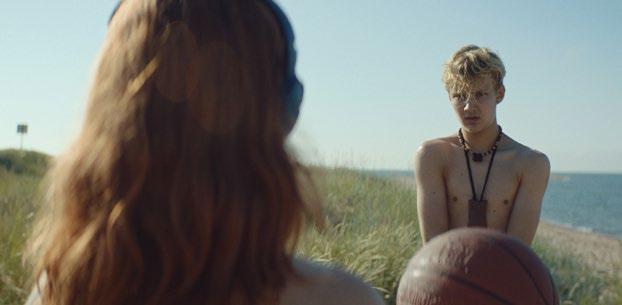

18 min
Original title Ääremängijad
Director & Screenwriter Madli Lääne
Director of Photography Ants Tammik
Production Designer Ketlin Kasar
Cast Aleksandra Saar,
Rasmus Roopõld, Tristan Ruusmaa
Producer Marianne Ostrat, Alexandra Films
Sales Ben Vandendaele, Radiator IP

You mention working environment. I imagine Jungle Law could have been played out with adults as well. Why did you choose underage characters?
In youth, there is much less control, and decisions can go drastically wrong. For me, it was important that the characters would have no prior sexual experience –everything they do is unconscious, they are drifting in dark water. We also decided on very young actors to make the characters appear somewhat awkward and naïve.
How difficult was it to find the young actors to play such challenging roles, and how did you discuss the depicted themes with them?
It was very challenging. We pushed the shoot back for a whole year because we couldn’t find actors the first time around. We started casting in March 2020, visited two schools, but then came the lockdown. We moved the casting online and I learned a hard lesson when my favourite candidates said no. I realized that I expected too much trust from them too soon.
The following year, we had an extensive casting process starting with long online interviews and several on-site improvisations. I chose three young people for each role. We did exercises that allowed them to get to know each other and we were also present as a team at these meetings so that the kids could experience who they were working with. I visited all the parents and had them read the script alongside me so I was sure they read it and knew what the film was about. I also discussed the ending of the film with the youngsters and their parents and rehearsed it during the casting to make the situation as clear as possible before making any decisions.
In rehearsals we talked in depth about the characters and their motivations, all questions were encouraged and euphemisms were not allowed.
The film has an intensely explicit sexual scene. How difficult was it to film, and how did you plan it?
We could film after sunset for about 40 minutes. We did shoot over several evenings, but that time goes by in an instant. It’s a total sprint – there’s no time to think, no time to improvise or rehearse, you just do it. We rehearsed the scene for weeks, even on location and on camera before shooting. Everyone knew the blocking by heart, so we were able to focus on the emotional side of the scene while shooting.
Since the topic is delicate, I took an intimacy coordinator training myself. To my disappointment, we discussed working with the actors in depth, but not how to capture it on camera. We had to figure out the right angle so that the act of oral sex would look real, but there would be no physical contact between the actors.
You address a controversial theme very delicately – none of the characters is inherently good or bad. They provoke each other based on their
vulnerabilities and then don’t know how to act. Often the victims in sexual violence cases, almost always women, are blamed. Was it difficult to choose how to portray the girl’s role without putting blame on her for the situation?
That was my main challenge – how to keep the moment of violence as minimal as possible. In essence, it’s just one step without any larger action.
We thought a lot about how to present Miriam as a character – what she says, what she wears. She is in comfortable sporty beachwear, and there is nothing wrong with that, yet as viewers, we might pass some judgments. She is bold and witty, even provocative with a strong personality, and she has to stand up to two boys.
She also becomes a bully herself at moments along the way.
Exactly, they all switch these roles. She has to assert herself, find a partner, break up a pair, and form a new pair. These pairs are constantly changing.
Neither of the boys is aggressive on their own, but they empower each other’s bad instincts, leading to toxic masculinity and viewing women as objects. How does such a thing arise in boys from such an early age?
These are learned patterns, which are constantly being re-established – through the dating vocabulary, in social media, and so on. There is some primal animality in us that we cannot shake off, no matter how well we live or how good we feel.
The film itself was born from the topic of sexual violence. When we asked for feedback for the first rough cut of the film, that topic wasn’t mentioned at all. Even if the situation is present, it doesn’t get recognized. Legally the sexual assault is there, but does it resonate emotionally? Do we recognize violence when we see it from the side?
How much did you ask the young people themselves about their experiences, and how did you connect their experiences to the film?
When the script was finished, I was afraid that it might just be some middle-aged invention that didn’t correspond to real life. I gave it to a teenager to read, who stated that it was a completely normal situation – he instantly described that at a party a boy wanted to leave and a girl promised to give him oral sex if he didn’t go. Probably nothing happened, but such a game was presented in life itself.
I had the story, but we improvised much of the dialogue in rehearsals with the actors. I started rewriting lines already during the casting. The young actors improvised the situations, knowing where they needed to end up, but the wording came from them.
With sexual violence, you are telling a story about a significant societal issue. How can a filmmaker impact this situation?

MADLI LÄÄNE is an alumna of Berlinale Talents, Midpoint Shorts, and European Short Pitch. She holds an MFA in Film and Media Production from the University of Texas at Austin (2017). Her film Dear Passangers was awarded as the Best Short Film at the Estonian Film and Television Awards in 2023. Madli’s new short drama Jungle Law premiered at the Odense International Film Festival in International Competition and won an Artist Award. At Alice nella Città, a parallel festival to Rome Film Fest, Jungle Law was awarded the Best Short Film in the International Competition. Currently, Madli is teaching at Baltic Film, Media and Arts School and working on her latest short The Song of Sleepless Nights which combines documentary, fiction, and animation.
I believe in the transformative power of films, no matter how naïve that may sound. I remember when I saw the film Kids I made the decision I wouldn’t dare to experiment with heavy drugs. I haven’t.
Through films, in a way, you can gain experiences without physically going through them yourself. One of my favorite films is Moonlight. I am a straight white woman, why should I care about the story of black gay community in Florida? But the film brings that world close to me, I sympathize with these characters, they become dear to me, and so do the people on whom those characters are based on. Films build empathy, compassion, openness and understanding in society. EF







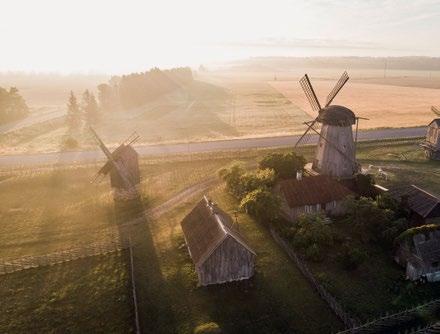


There’s something to look forward to: the birth of Wolf Tribe – PÖFF’s film community takes shape.
By Erle Kivilo

For 28 consecutive years, every November, the Black Nights Film Festival (PÖFF) brings film enthusiasts and professionals together in Tallinn and Tartu, from across Estonia and worldwide. In addition to its international film program, the festival offers a wide range of opportunities for film industry professionals. As part of the festival, Tallinn hosts Industry@Tallinn & Baltic Event, a premier industry event providing a platform for collaboration and the development of new projects. Additionally, PÖFF organizes the Haapsalu Horror & Fantasy Film Festival (HÕFF) in April, the Tartu Love Film Festival (Tartuff) in August, and the “Kumu Documentary” series year-round in Tallinn, while also participating in the organization of the Women’s Nights Film Festival in Rapla in March. PÖFF has evolved into much more than just an A-category film festival held over a couple of weeks in November – it has become a cultural platform that connects film enthusiasts.
Organizing PÖFF becomes a greater challenge for the team each year, and the festival could not be realized without the support of sponsors, partners, and volunteers. To ensure that PÖFF continues to enrich Estonia’s cultural and economic life, it is essential to evolve, adapt to changes, and continually offer something new and exciting to film lovers. In today’s fast-paced world, where information overload is common, it is increasingly important to find ways to bring people together and provide meaningful, personalized experiences. This need gave rise to the idea of creating a community that unites film lovers – PÖFF’s Wolf Tribe. What could be more exciting than sharing all the experiences PÖFF offers year-round with the entire Wolf Tribe?


PÖFF already serves as a platform that brings together hundreds of volunteers, visitors, filmmakers, participants, supporters, and partners. Wolf Tribe aims to
deepen this connection by building a community where joy and knowledge are shared, mutual support is offered, and closer collaboration takes place throughout the year. For partners and sponsors, PÖFF provides opportunities to promote their products and services to film enthusiasts in exchange for their support of culture, fostering a mutually beneficial relationship between culture and business.
Everyone – from film enthusiasts to professionals, from PÖFF organizers to festival visitors and participants. The community will share information, organize events and trainings, offer support, and recognize and appreciate its members. While the exact activities and benefits are still a surprise, PÖFF’s creative team promises that all film lovers will have something to look forward to. EF

Latvia’s presence at the Tallinn Black Nights Film Festival (PÖFF) this year is unprecedented, with 14 feature films, three short films, one mini-series, and a new film project represented across eight PÖFF competitions and the industry section, Industry@Tallinn & Baltic Event.
By Kristīne Matīsa
HOCUS POCUS
Latvia in FOCUS
This diverse showcase reflects the energy and growth of Latvia’s film industry, which continues to gain momentum despite having one of the lowest funding levels among regional film industries. From multiple world premieres to Gints Zilbalodis’ internationally acclaimed Flow, and from intense competi-
tion in the Baltic Film Competition, to selections in the Official Selection, First Feature Competition, Rebels With a Cause, Youth and Children’s Film Festival, and applications for Shorts Competition, TV Beats Screening Day and Old Gold; Latvian filmmakers are exhibiting a remarkable range of creativity in Tallinn this year.
In the Official Selection, Latvia is represented by acclaimed direc-
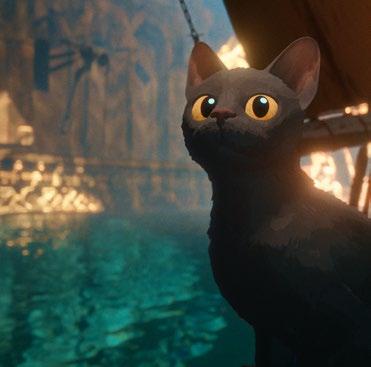
tor Juris Kursietis, who, in his third feature film The Exalted, continues exploring how social environments shape personal identities and relationships. Departing from the focus on vulnerable social groups seen in Modris (2014, Jury Prize at San Sebastian) and Oleg (2019, world premiere at Cannes Directors’ Fortnight, EFA nomination), this new sarcastic drama introduces a seemingly happy fami-



ly on the brink of crisis. In this Latvian-Estonian-Greek co-production, a renowned organist discovers her husband, the head of a major state company, faces corruption charges. Produced by Alise Ģelze at White Picture, the film features an international team, with actors from Latvia, Germany, Finland, and Greece, cinematography by Poland’s Bogumil Godfrejow, costumes by Estonia’s Jaanus Vahtra, and editing by Greek editor Yorgos Mavropsaridis.
LATVIAN TALENT ON DISPLAY IN THE BALTIC
The Baltic Film Competition features an impressive array of Latvian talent, with internationally awarded films and several world and Baltic premieres. Among the highlights is the animated feature
Latvian filmmakers are exhibiting a remarkable range of creativity in Tallinn this year.
Flow by Gints Zilbalodis, a film already celebrated at Cannes, Annecy, and elsewhere, and nominated for both the EFA and LUX Audience Awards. Flow has also captivated Latvian audiences, topping the national box office for eight weeks – a must-see journey of a Latvian Cat in a post-apocalyptic world. Also garnering international attention is Touched by Eternity, a vampire comedy by young director Mārcis Lācis (Jury Award at Fantastic Fest, Austin, USA), and the Lat-
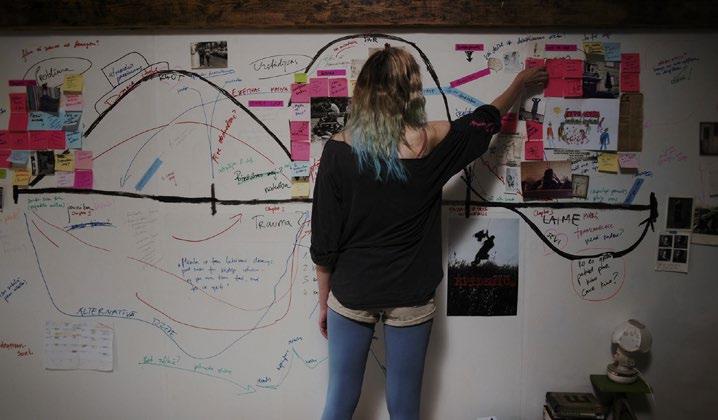
vian minority co-production Drowning Dry by Lithuanian director Laurynas Bareiša, which won two major awards at Locarno IFF. Remarkably, these films all share the same Latvian producer, the internationally successful Matīss Kaža.
Four other Latvian films make their debut on the international festival scene at Tallinn. Among them is the historical epic In the Land that Sings, directed by Māris Martinsons and produced by K Films, which explores the origins


of the Song Festival 150 years agoa tradition of deep cultural significance across the entire Baltic region. The competition also features two contemporary dramas: Black Velvet, an ironic semi-autobiographical film by director Liene Linde in collaboration with Ego Media, follows a thirty-something woman’s struggles with life and creative ambitions; and Anna LOL by director Ivars Tontegode, based on real diaries, in which a young woman grapples with the aftermath of her best friend’s suicide.
The End, the sole Latvian entry in the documentary category, takes a practical yet philosophical look at death. Created by celebrated nature cinematographer Māris Maskalāns with VFS Films, the film has been years in the making. While the opening credits caution viewers about disturbing imagery, Maskalāns’ skilful camerawork and the philosophical perspectives of selected experts transform nature’s endless life-and-death cycle into a meditation on the existential rhythms of the world.
Two remarkable Latvian films join non-traditional competitions at PÖFF. In Rebels with a Cause, Uģis Olte’s “musical film” Tesa Man stages an open-air concert by the post-metal band Tesa in a November forest, enriched with mythical characters, bonfires, and symbolic elements like snow, clay, and
ashes. Meanwhile, director Signe Birkova presents her debut feature Lotus in the First Feature Competition. Birkova is known for exploring themes of women’s spiritual resilience and autonomy, and her film nods to early cinema aesthetics, situating her protagonist Alice von Trott in Latvia in 1919. As Alice encounters a decadent underground society, a group of silent cinema enthusiasts, and discovers the magnetic world of “cinematography,” the story blends intrigue with the allure of silent film.
Latvia’s strength in youth and family cinema shines in Tallinn’s 24th Youth and Children’s Film



Festival. Boom! follows teenage friends Hugo, Toms, and Karla in an action-packed adventure where Hugo’s newfound superpowers test their friendship. Directors Marta Selecka and Andra Doršs, seasoned in children’s TV, make their feature debut, infusing youthful energy into the film. Fantastic powers and an extraordinary flight of imagination also characterizes the family film The Book of Everything, directed by Dutch filmmaker Ineke Houtman and co-produced with the Latvian studio White Picture and producer Alise Ģelze as minority partners. Meanwhile, Latvia’s reputation as a powerhouse in animation is rein-
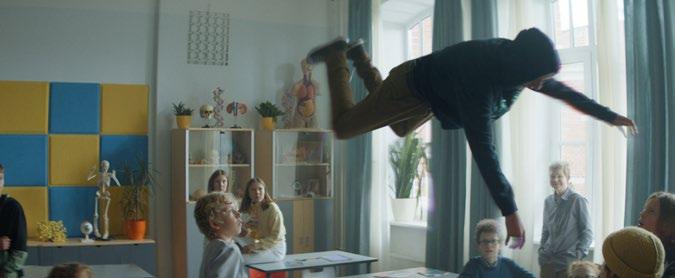

forced by the full-length animated film Thelma’s Perfect Birthday, recently honoured with the European Children’s Film Association award in Germany. In gentle, finely detailed coloured-pencil animation, Thelma’s Perfect Birthday follows a young penguin named Thelma, who worries that her fifth birthday may never arrive, leaving her forever four – a heartfelt journey full of charm and imagination.
Latvia also has a prominent place in PÖFF Shorts 2024. Emīlija Karetņikova, a rising director, brings Confessions of My Childhood Body to the Shorts New Talents Competition: Live-action programme. This bold, semi-autobiographical film sheds light on child grooming issues in youth camps. In the Shorts Animation Competition, Atom Art, one of Latvia’s top animation studios, represents the country with two films. Kafka. In Love, directed by Zane Oborenko, uses sand animation to bring Franz Kafka’s letters to Milena Jesenska to life, while Edmunds Jansons presents Freeride in C, a rhythmic experiment that helped earn him a professional doctorate with his dissertation “Repetitions and Loops as Form Elements in Author Animation.”

In this year’s Old Gold: Classic Films Come to Life section, audiences will revisit a pivotal work in Latvian cinema history. One of the world’s most renowned Latvian documentaries, Is It Easy to Be Young? (1986, restored in 2024), directed and filmed by Juris Podnieks, served as a harbinger of perestroika and collapse of the USSR. Podnieks is celebrated as one of the most internationally significant Latvian documentary filmmakers.
Latvia is actively involved in the inaugural TV Beats Screening Days at Industry@Tallinn, reflecting its position as currently the



most active country in the production of quality episodic films in the Baltics. Mutiny, directed and produced by Andrejs Ēķis, is one of four episodic films premiering in 2024, supported by ERDF funding. The Baltic Event Co-Production Market also features an entry from Latvia - The Last Meal, a collaborative project between VFS Films and Slovenia. Director Elza Gauja, recognised for addressing difficult topics with a light touch in her two previous feature films, will helm this production. Another co-production, Call me Calendar (Latvia, Lithuania), appears in the Baltic Event Works in Progress showcase as a tragicomedy about a bizarre character Oskars, based on the bestselling Latvian debut novel, directed by significant director Juris Poškus.
Summarizing Latvia’s extensive participation in this year’s Tallinn festival, the diverse spectrum of events demonstrates that Latvia is an active, professional, and successful contributor to the Baltic and European cinema landscape. EF

This year, eleven Lithuanian films (seven feature-length movies and four shorts) will be presented at The Tallinn Black Nights Film Festival. Four of them – Murmuring Hearts by Vytautas Puidokas, Jōhatsu by Lina Lužytė & Nerijus Milerius, Paradise Not Lost by Linas Mikuta, and Tasty by Eglė Vertelytė − will have their world premieres at the festival.
By Ieva Šukytė
Murmuring Hearts – an observational documentary by Vytautas Puidokas produced by Rūta Jekentaitė – tells us about life in a remote community of recovering addicts. Through the point of view of a new arrival, a 14-year-old boy, the film tries to reveal how addictions develop, how they affect interpersonal relationships, and how they can be passed down from one generation to another. The film is competing in the Doc@PÖFF Competition programme – a new programme that has started this year.
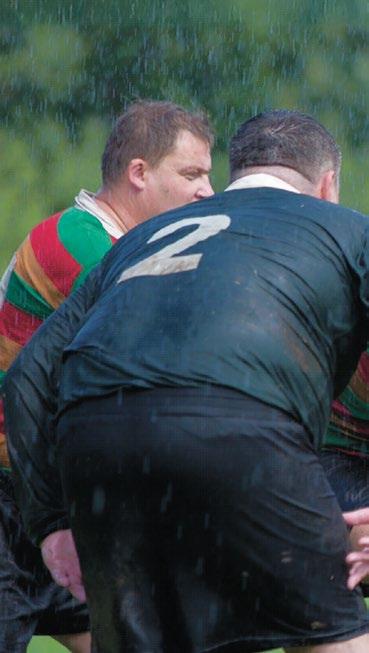

The Critics’ Picks Competition programme will include Jōhatsu, a feature film directed by directors Lina Lužytė & Nerijus Milerius and produced by Uljana Kim that is centred on the protagonist Lina. To all appearances, she leads a perfect life: a cosy apartment, a caring boyfriend, and a job at the Vilnius city morgue, which she likes. Until one day, the body of a sailor arrives and triggers Lina’s curiosity and doubts. She becomes obsessed with finding more about the dead sailor. The tense and bleak atmosphere of the film helps us feel deep
inside what a jōhatsu – a disappearance of a person as if they had ceased to exist – can mean. Where will this search take Lina and what is she actually looking for? The protagonist is played by Žygimantė Elena Jakštaitė, who was selected as one of the European Shooting Stars in 2021.
The other two world premieres, Paradise Not Lost directed and produced by Linas Mikuta, and Tasty by Eglė Vertelytė (produced by Lukas Trimonis), will compete in the Baltic Film Competition programme. The first of them, a documentary, revolves around an autis-

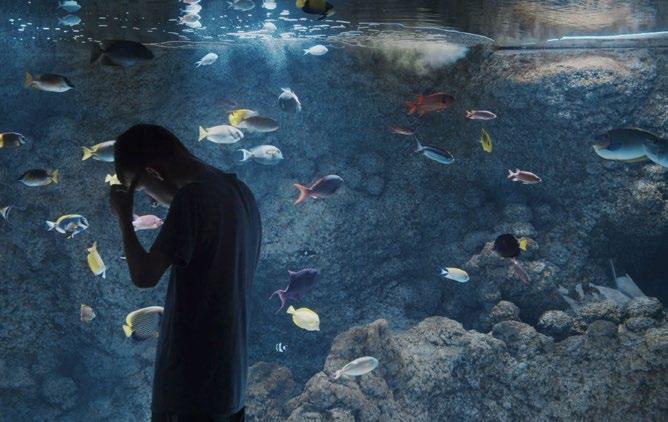
tic teenager, who has additional challenges thrown at him by life. The second one is a long-awaited full-length comedy by Vertelytė centred on two friends who enter a cooking show.
Two more Lithuanian films will compete in the Baltic Film Competition programme. Director Ignas Miškinis, returning to film-making after eight years, will present his comedy The Southern Chronicles. It is the second film produced by Lukas Trimonis that competes for the prize. It will take the viewers to the Southern neighbourhood of the industrial city of Šiauliai, the home of Rimants, who
Films from Lithuania will have their world premieres at Black Nights Film Festival!



believes in physical strength and money. The leading role in this film is played by Džiugas Grinys, who was selected as a European Shooting Star in 2023. The last Lithuanian film included in the Baltic Film Competition programme is Drowning Dry directed by Laurynas Bareiša and produced by Klementina Remeikaitė. In 2021, Bareiša’s debut feature Pilgrims also competed for the title of the Best Baltic Feature Film. His new film follows the families of two sisters, Justė and Ernesta, who meet at their summer house to spend a weekend together. However, this weekend will change their lives forever. Both the director and the ensemble cast won awards at the Locarno Film Festival this year.
Toxic directed by Saulė Bliuvaitė and produced by Giedrė Bu-
rokaitė, the winner of the grand prize at this year’s Locarno Film Festival, will participate in two separate programmes aimed at young people: International Youth Competition Programme and Children’s Rights Programme. The film looks into the dark side of teenagers dreaming of a model’s career. Various POFF Shorts programmes will present four Lithuanian shorts. Left-Handed Pen (by Adas Burkšaitis (produced by Greta Akcijonaitė and Kotryna Ramanauskaitė) will compete in the Shorts Live-Action Competition programme. Hubble’s Law by Arnas Balčiūnas (produced by Morta Verbickaitė) will be a part of the Shorts New Talents Competition: Live-Action, while Hoofs on Skates by Ignas Meilūnas (produced by Justė Beniušytė) will be included in

the Shorts Kids Animation Competition. An animated film Plica polonica directed and produced by Agata Tracevič will be shown in the Night Cinema programme.
In addition to the latest works of the Lithuanian creators, festival visitors will be offered a recognised classic Lithuanian film. The 1968 film Feelings by Almantas Grikevičius and Algirdas Dausa, that will transport the viewers to the post-war period, will be included in the classic cinema programme Old Gold: Classic Films Come to Life.
Drowning Dry competes in the Baltic Competition programme.
Several Lithuanian projects will be presented at different Industry@Tallinn & Baltic Event programmes.
Along with the films that compete in the various programmes of the festival, a large team of Lithuanians will take part in Industry@ Tallinn & Baltic Event. Actor Robertas Petraitis was selected to participate in the Black Nights Stars programme. The Renovation by Gabrielė Urbonaitė (produced by Uljana Kim) and Sand in Your Hair (Smėlis tavo plaukuose) by Mantas Verbiejus (producer Živilė Gallego are presented in the Works in Progress section, and The Flood, developed by Jorūnė Greičiūtė (producers Rūta Petronytė & Justinas Pocius) will participate in the Baltic Event Co-Production Market. A series project Blood Dunes by Andrius Lekavičius (producer Greta Akcijonaitė) will participate in Midpoint Series Launch programme. A TV series A Wolf’s Palate by Emilis Vėlyvis (produced by Daiva Varnaitė-Jovaišienė & Asta Liukaitytė) will participate in the TV Beats Screening Day, which will take place for the first time. EF



Estonia’s capital, Tallinn, has emerged as a premier destination for both local and international film productions. With its unique blend of medieval charm, modern architecture, and industrial landscapes, Tallinn offers a wide variety of settings for historical dramas, contemporary narratives, and futuristic blockbusters.
By Eda Koppel

Koppel
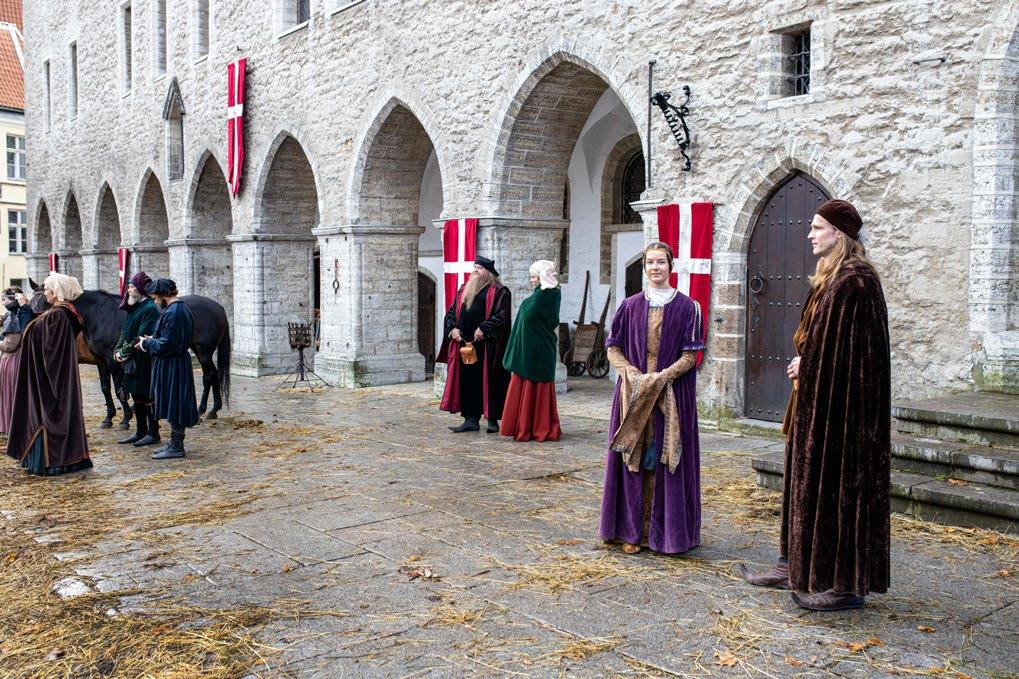

Over the years, the city has proven to be an ideal filming location and a reliable partner for filmmakers worldwide, supported by collaborative production teams and efficient logistics.
One of Tallinn’s standout features is its diverse locations, allowing the city to represent historical periods, modern-day environments, and even futuristic worlds. The UNESCO World Heritage-listed medieval Old Town, for example, is a favourite for historical productions like the Melchior the Apothecary series, which used Tallinn’s Gothic architecture to evoke a 15th-century atmosphere. Cobblestone streets, medieval structures, and ancient city walls create an authentic backdrop for filmmakers aiming to capture the past.
In contrast, Tallinn’s modern and Soviet-era buildings provide raw, industrial aesthetics suitable for contemporary and futuristic themes. Hollywood director Christopher Nolan tapped into this potential for
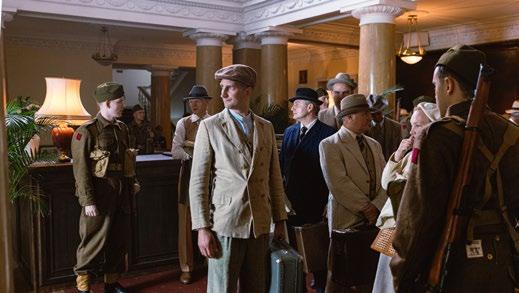
his 2020 blockbuster Tenet; where Tallinn’s brutalist architecture, industrial zones, and unfinished structures doubled as cities across the globe, including Kyiv and a futuristic metropolis. Key locations like Linnahall, the Maarjamäe Memorial, and Laagna Road gave the film a distinct visual style and showcased Tallinn’s flexibility as a filming location.
Tallinn’s reputation as a filming destination continues to attract high-profile international projects. The ongoing spy series The Agency, for instance, has utilised several Tallinn locations, including the Hilton Hotel, Laagna Road, and Narva Road. This series, executive-produced by industry names like George Clooney and Keith Cox, highlights Tallinn’s ability to represent various global cities. Much of the footage shot here represents Minsk, underscoring Tallinn’s adaptability in portraying diverse settings.
Similarly, the series Seconds, now in its second season, chose Tallinn as its filming base after a successful

initial shoot in 2023. Finnish production company FireMonkey returned to Estonia for the new season, with locations such as Porto Franco, the Luther Business Quarter, and Ülemiste City often doubling for Helsinki. Tallinn’s flexibility in portraying different locales has made it a compelling choice for these largescale productions.
Another Finnish project filmed recently in Tallinn, Therapy, directed and written by Paavo Westerberg, is a realistic tragicomedy exploring themes of change, rebirth, love, hate, relationships, and life’s unpredictable forces. Estonian co-producers Stellar joined the project through Kaiho Republic, whose producer Liisa Penttilä has collaborated with Estonian teams for years. Much of Therapy’s story unfolds in an Estonian therapy centre, with Kolga Manor transformed into the primary location. Tallinn itself is featured in a flashback scene filmed at Kalaranna, where the main character walks home from work, demonstrating the city’s versatility in portraying both local and international settings.
Adding to Tallinn’s recent lineup is the U.S. comedy Bubble & Squeak, directed by Evan Twohy. This film brings a fresh dynamic to Tallinn’s portfolio with a story set in the heart of the city. The city’s efficient permit process was crucial to Bubble & Squeak’s production, with permissions secured in just a week, even accommodating last-minute changes. The local production team Three Brothers, led by Estonian producer Elina Litvinova, ensured the smooth coordination with the city. This collaborative approach reinforced Tallinn’s reputation as a film-friendly destination that meets tight schedules and international standards.


A major reason filmmakers are drawn to Tallinn is the city’s streamlined permitting process and proactive support for production crews. Despite lacking a dedicated Film Office or a specific film fund, Tallinn is remarkably efficient in meeting the needs of film teams. Productions such as Therapy and Bubble & Squeak highlight Tallinn’s logistical ease, where quick permits and efficient collaboration with city authorities enable filmmakers to maintain tight schedules without compromising creative vision.
Local partnerships play a key role in attracting filmmakers to Tallinn. Estonia’s skilled workforce, combined with the Film Estonia cash rebate fund, provides both logistical ease and financial benefits for international filmmakers. Positive feedback from past productions has solidified Tallinn’s reputation as a film-friendly location with attractive economic incentives and agile response times.

According to Hannes Paldrok, CEO of Location Unit, Estonia’s reputation as a production landscape has encouraged producers to consider recreating cities like New York, London, and Oslo within its borders. While Tallinn’s settings may not fully replicate these cities, more realistic searches focus on recreating periods and interiors from countries like Finland, Denmark, Sweden, and Germany. Locations like Roosikrantsi Street have successfully represented cities such as Copenhagen and Helsinki.


With its rich blend of historical and modern locations, compact city layout, and strong local support, Tallinn is poised to continue its rise as one of Europe’s most sought-after filming locations. This momentum is bolstered by events like the Tallinn Black Nights Film Festival and Industry@Tallinn & Baltic Event, providing a global platform for new partnerships and future projects, many of which may be filmed in Tallinn.
As Kaarel Oja, vice-mayor of Tallinn, notes, “We see cities competing to host major regional cultural and sports events. These occasions are more than just annual celebrations; they lay the groundwork for the growth of creative industries and enhance a city’s international profile. Tallinn is fortunate to have the Black Nights Film Festival and its dedicated organisers, and through their efforts, Tallinn has firmly placed itself on the wider film industry map.”
Tallinn’s proximity to natural landscapes, including forests and the sea, adds to its appeal, enabling crews to easily transition from outdoor scenes to cosy restaurants in the Old Town by evening. Though the lack of mountainous scenery limits certain productions, there is an increasing trend to depict Tallinn as itself, opening up exciting new projects that require fresh perspectives.
Tallinn’s film appeal is further elevated by the annual Tallinn Black Nights Film Festival (PÖFF). Founded in 1997, PÖFF has grown into one of Northern Europe’s most prestigious festivals, joining the elite ranks of FIAPF-accredited events like Cannes, Berlin, and Venice in 2014. The festival showcases world cinema and emerging talent, with its industry platform, Industry@ Tallinn & Baltic Event, drawing over 700 professionals annually. These gatherings foster collaborations, with many resulting projects ultimately choosing Tallinn as a filming destination.
The success of Estonian cinema reflects the high quality of work by local filmmakers. Tallinn offers an inspiring environment with diverse emotions and stories, making it a natural choice for international producers. Alongside Tallinn’s unique settings, factors like professional crews and the tax rebate system enhance its appeal as a competitive filming location. This dynamic supports cultural tourism, further strengthening the city’s attractiveness.
With a welcoming attitude, and an eye on future growth, Tallinn remains open to international film teams, helping them feel at home as they bring their projects to life in the Estonian capital. EF
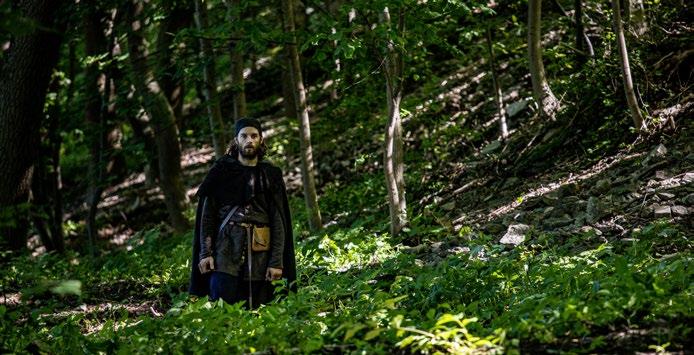

Is there a common thread in this year’s Baltic films?
Each of the 16 films in this year’s programme stands uniquely apart, reflecting a range of genres, themes, and historical or recent events. Expect creativity, bold topics, and diverse storytelling from Baltic filmmakers. A shared element, however, is Baltic humour — ironically woven through nine of the films, often blending comedy with life’s tougher truths. Another noticeable theme is the bold exploration of intimacy, with several films featuring unfiltered, daring scenes. Animation also shines, as seen in the Latvian animated gem, Flow
With record submissions this year, was evaluating them enjoyable or challenging?
It’s all about organization. Our small but skilled programming team could quickly identify the technical and directorial merits of each film. While watching great films is rewarding, selecting the best from such a strong pool was the real challenge.
What themes stand out in this year’s competition?
This year, it’s less about escaping reality and more about transforming it. For example, Percebes addresses overtourism from an endangered species’ POV, I Died in Irpin shares a Ukrainian girl’s experience during the Russian invasion, and Flower Show explores gender roles
through floral symbolism. Our programme uses animation to inspire reflection, not escape.
Any surprising new techniques?
Classic 2D and stop-motion dominate, though some, like Luna Rossa, experiment with motion capture. We also see a revival of pinscreen animation and unique methods like sand animation in Kafka. In Love. Directors persist in bringing these complex, technically demanding projects to life.
Did films stand out more for artistic form or originality?
Both matter, but it’s the balance of artistic and narrative strength that makes these films exceptional and sets them apart from one another.
What’s the main purpose of the Baltic Film Competition at PÖFF?
This year, Baltic films are included across all major PÖFF competitions, a major achievement and testament to the Baltic region’s growing global presence. While the competition once focused on promoting new films from Estonia, Latvia, and Lithuania, it now celebrates the international success of Baltic cinema, which has appeared at festivals from Cannes to Melbourne. The competition has two main missions: to premiere bold new Baltic films and to showcase internationally acclaimed films to Estonian audiences, spotlighting their achievements from the past year.

“Animation is not escapism – at least in our programme.”

Festival Founder and Programme Director, curator of the Official Selection
What themes dominate in the PÖFF’s Official Selection Competition this year?
This year’s competition spans genres from psychological thrillers to sci-fi, with films chosen for their message rather than genre. Key themes include aging, end-of-life issues, and euthanasia, reflecting post-COVID sensitivities. Topics like school bullying, children’s rights, and domestic violence are also prominent, while political themes are less central compared to last year. War is explored in psychological, rather than traditional, portrayals. For us, genre is merely a tool to convey the message.
Is the focus in the Official Competition more on audience-friendly films or auteur cinema?
We emphasize auteur-driven films with
As an acclaimed documentary director now selecting films, how does it feel to be on the programming committee?
I accepted because I was genuinely interested. I’ve never watched so many films in one go before – at festivals, I typically watch two a day, but here, we watched them all day long. Discussing them with fellow committee members like Mike Arnott, Edvinas Pukšta, and Mikk Granström was fascinating. The selection was tough, with so many strong documentaries.
What themes and trends stand out in this year’s selection?
Over the past decade, smaller cameras have enabled more intimate, independent filmmaking, often on modest budgets. Many documentaries now delve into personal, everyday family stories, creating powerful narratives, and several such stories are part of our 11-film competition lineup. War also stands out as a theme,
with four films on Ukraine featured in the ‘Best of Docs’ section. Telling the truth remains a risk, as does making films based on real stories.
Are there any banned or scandalous films in the Doc@PÖFF selection?
No. Our films are premieres without any previous history. We aim not for scandal but for strong documentaries that
“Our goal is to present powerful, cinematic documentaries that resonate emotionally.”
connect emotionally. We want to attract both documentary newcomers and enthusiasts, offering both entertaining films and ones that celebrate the art of filmmaking. Our festival is for a broad and diverse audience.
“The festival is a platform where films can have a dialogue.”
diverse cinematic languages.. Some are complex and visually rich, while others follow more familiar storytelling. The Official Selection Competition balances auteur and audience-friendly films, providing a broad appeal. Sections like Rebels With A Cause and Critics’ Picks specifically cater to film enthusiasts. The festival serves as a space where both films and filmmakers can engage in meaningful dialogue. Our A-list status, strong competition, and industry ties attract new films for side programmes, reflecting our audience’s interests. The diversity of films directly correlates with audience demand and engagement.

How has this year’s film selection surprised you?
The biggest surprise is a shift back to real-life topics – relationships, hobbies, and school – moving away from virtual themes. Films now delve into relationship conflicts and the challenge of self-discovery in today’s stressful world, all with excellent technical quality. This return to classic themes enriches the youth competition programme.
“If we don’t educate young people ourselves, no one else will.”
What’s new in this year’s programme?
Our selection remains around 50 top films, with additions like an anime programme to reflect its popularity among youth, and a focus on skateboarding culture in the documentary lineup. Films
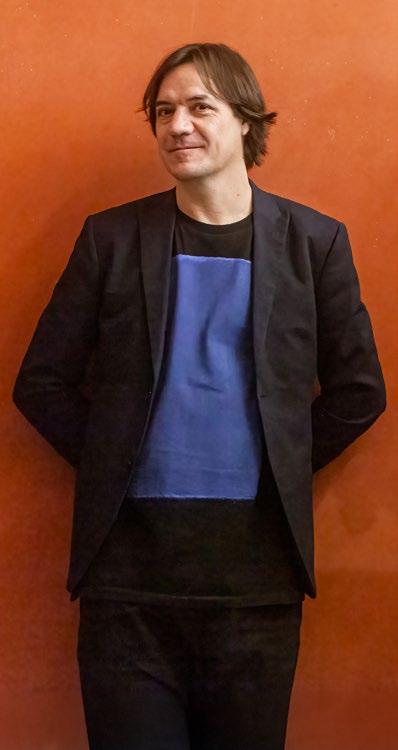
from neighbouring countries also highlight skateboarding’s cultural impact on a youth.
Are there young filmmakers who debuted at Just Film returning with feature films?
Yes, some have returned to PÖFF with feature films. This year, Raul and Romet Esko present Two of Me, while Meel Paliale and Urmet Piiling return with Rolling Papers in the youth film competition. For over 20 years, Just Film has nurtured new filmmakers, giving them a platform to build their careers.
What’s next for Just Film?
Just Film has educated a new generation, but more work is needed. Competing with social media is challenging, which is why we introduced film education initiatives like the Just Film school – essential for a solid foundation in film culture.

of Rebels with a Cause competition
Rebels With a Cause is likely PÖFF’s most radical programme. What should the audience expect?
It’s a candy for conscious viewers looking for a fresh, surprising cinematic experience. We curate this programme with daring spectators in mind, inviting them to explore unique storytelling that reveals personal and universal stories, evoking ideas and emotions that bring the screen to life.
journeys, or sharp humor. Themes include evolving gender roles, the creative process, and post-pandemic survival. But the selection goes beyond genre
What surprises are in store for Rebels With a Cause this year?
“We are dedicated to audiences who embrace cinematic risks”
What are we rebelling against this year, and what are we fighting for? What themes stand out in this year’s films?
The filmmakers in our Rebel programme aren’t fighting – they’ve already won. They bring fresh, personal perspectives that challenge mainstream cinema, offering viewers self-aware lullabies, surreal
This year’s Rebels With a Cause celebrates bold cinematic language, with highlights like a moving film on dementia shot on decomposing 16mm and a visually stunning reflection on post-pandemic life. Styles range from high-end cinematography to TikTok-inspired storytelling, and a DIY fantasy doc in IG-style vignettes. Expect daring explorations of personal struggles, surrealism with gangster vibes, and a double feature tackling “toxic gender” themes with dark humor, along with fresh takes on Van Gogh and women’s emancipation.
On what principle do you select films for the PÖFF Critics’ Picks competition programme, and how does this selection differ from similar programmes at other film festivals?
My top criteria are quality and artistic vision. Cinema’s beauty lies in how directors and creative teams bring these stories to life through directing, design, cinematography, and editing. Our Critics’ Picks section draws inspiration from Cannes, Venice, Berlin, and Locarno. Unlike these festivals, we showcase around ten films across genres, including crossover films that appeal broadly while retaining a unique auteur style — much like the French New Wave’s appreciation for Hitchcock. Our selection includes entertaining genre films, proving that artful
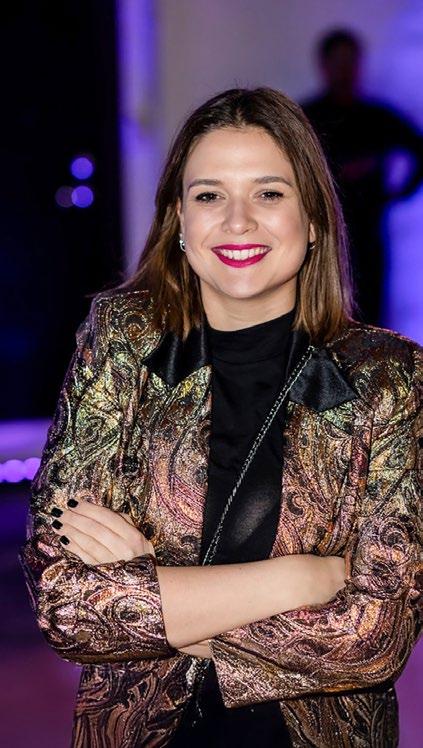

cinema can also be accessible. Our films are very unpredictable and full of fun!
Is there anything surprising in the selection for an experienced curator?
As an experienced curator, I thrive on surprises. After watching over 1,000 films annually, I’m excited to present I, the Song by Bhutanese director Dechen Roder in Tallinn. This film offers a fresh take on the doppelganger theme, influenced by
German Expressionism and Kieślowski. Other highlights include the surreal Ecuadorian debut Fishgirl, the Canadian film Hani about child marriage in China, and Brazil’s passionate Streets of Glória. I’m also pleased to see the rise of Lithuanian cinema, exemplified by Jōhatsu, codirected by Lina Lužytė and Nerijus Milerius, alongside the Czech film Nobody Likes Me. I enjoy films with dual visions — two perspectives in one!
What’s special about this year’s first feature competition?
The competition spans diverse themes, with “the absurd” emerging as a common thread, often featuring irony toward self and society. Human relationships are explored from varied perspectives across genres, from psychological to drama. There’s truly something for everyone in this wide-ranging program. Screenings will be held in a 287-seat auditorium, making this an audience-focused competition. We reviewed around 250 debut films for world premieres. Given the large venue, we aim for accessible, audience-friendly films to make each screening special for both viewers and filmmakers, especially in these challenging times.
First feature competition filmmakers come from all ages and backgrounds. What could be the common thread between them, what makes a person make a film?
Filmmakers in the first feature competi-
“We aim for accessible, audience-friendly films to make each screening special for both viewers and filmmakers.”
tion come from diverse ages and backgrounds. What unites them is their desire to tell compelling stories. The films share intriguing narratives, but the impact comes from elements like cinematography, acting, and art that enhance the storytelling. For instance, we have films focused on visual language and performance.
What is the programme’s geographical reach?
Geographically, our reach is very wide. There are many films from Europe, but also from Latin America and Canada. With the current migration of people, borders are dissolving. So we can’t really say which country the films come from. EF
Industry@Tallinn & Baltic Event, the Nordic region’s most vibrant film summit, welcomes 700 global guests to Tallinn from 15–22 November. With a packed schedule of 120+ masterclasses, panels, and workshops, we asked director Arun Tamm and producer Marianne Ostrat for their top programme picks.

ARUN TAMM, an acclaimed Estonian director, gained recognition with his short The Bastards, leading to his debut feature Bad Hair Friday, which earned nominations at Raindance and Tallinn Black Nights. He then shifted to commercials, becoming a sought-after director. Currently, he’s in post-production for his period crime series Von Fock and developing his next feature, Container, starring Dar Salim. Check it OUT!
NETWORKING SESSION BY AMANDA GRAHAM November 19, 15:30
Nordic Hotel Forum, Arcturus
But, naturally, we all still work with people, not machines, so while keeping up with the latest trends and developments in the field of technology, we cannot escape interacting with actual humans. If you struggle with that, let the inspiring Amanda Graham tear you right out of your comfort zone and teach you how to survive there.
INTERNATIONAL WORKS IN PROGRESS
November 21, 9:45
Apollo Kino Coca-Cola Plaza
Just Film Works in Progress
November 21, 15:00
Apollo Kino Coca-Cola Plaza
INTERNATIONAL SCREEN INSTITUTE: AUDIENCE DESIGN
November 20, 9:00
Nordic Hotel Forum, Arcturus
Let’s start from the beginning of the collaborative process, the early stage of development when directors and producers should explore and engage the audience Benjamin Cölle will lead a workshop on Audience Design, hosted by the International Screen Institute as part of the Script Pool, within the Discovery Campus educational program.
FILM FOR THE FUTURE: EXPLORING SUSTAINABLE FILMMAKING PRACTICES IN SWEDEN AND THE BALTIC STATES
November 20, 15:00
Nordic Hotel Forum, Altair
Moving on to the production stage and a very relevant topic in today’s industry a session on sustainable filmmaking practices in Sweden and the Baltic States. I can proudly add that my latest production is a “green” one!
ACTUALLY USEFUL AI TOOLS FOR CREATIVES
November 21, 13:15
Nordic Hotel Forum, Arcturus
AI is used in all aspects of filmmaking today whether we work with text, image, sound, or 3D, at any stage of a project’s life cycle. Therefore, it is definitely useful to join the following panel discussion organised by Just Film Industry Days.
Baltic Event Works in Progress
November 22, 9:45
Apollo Kino Coca-Cola Plaza
Don’t miss out on the Works in Progress presentations − there are 17 projects in three categories almost ready to be released into the wild world. Go and get the first glimpse of the next hot titles.
PROJECT PITCHING: BALTIC EVENT CO-PRODUCTION MARKET
November 20, 16:30
Nordic Hotel Forum, Capella
Now it’s time to sit back, relax, and enjoy the fruits of our labour! For the first time since 2005, Co-Production Market projects will feature a public pitch an excellent chance to gather feedback and see others’ work. I’m excited to announce I’ll be presenting my own project: Container, an Estonian-Norwegian production by Madis Tüür and Münchhausen Films.
TV BEATS SCREENING DAYS
November 19–20,
Apollo Kino Coca-Cola Plaza / Cinema Artis
And last, but not the least, dedicate a full day to watch fresh new drama production from the region at the first ever TV Beats Screening Days. Five new drama series will be shown for sales agents, distributors, and industry professionals. I’m thrilled to announce that the lineup includes the world premiere of Von Fock, an Estonian historical crime series I directed.
FROM SHORTS TO FEATURES
November 16, 12:00
Apollo Kino Coca-Cola Plaza, A. Le Coq Sviit
One valuable hour with wonderful script consultant Anna Ciennik for everyone on the crucial move from shorts to the first feature
TV BEATS MASTERCLASS: THE ART OF DEVELOPING COMPELLING STORIES FOR A BROAD INTERNATIONAL AUDIENCE
November 19, 10:45
Nordic Hotel Forum, Arcturus
Developing stories it at the core of everything we do in audiovisual industry and I’m curious to hear about it from the perspective of acclaimed director, writer, and producer Per-Olav Sørensen.
COMEDY WRITING WORKSHOP BY AMANDA GRAHAM
November 19, 12:30
Nordic Hotel Forum, Arcturus
Humour in a film of any genre is like salt in a dish − it brings out all other flavours and nuances
INDUSTRY INNOVATION FORUM: 10TH ANNIVERSARY
November 20, 13:00 Kultuurikatel
Industry Innovation Forum is the event where I hope to hear tomorrow’s news where our industry is going
GERMANY IN FOCUS: EXPLORING FEDERAL AND REGIONAL FILM FUNDING FOR CO-PRODUCTIONS
November 21, 15:00
Nordic Hotel Forum, Capella
I personally haven’t co-produced with Germany yet, so I’m attending this session to educate myself. And if you already work with Germany, it’s a great chance to get an update on their funds! See you there!
FUNDING & STRATEGY IN FOCUS: HELPING PRODUCERS THRIVE IN A CHANGING INDUSTRY
November 21, 17:00
Nordic Hotel Forum, Capella
Everything that supports an independent producer surf the waves of our rapidly and radically changing industry sparks my interest!
Photo by Erlend Štaub

MARIANNE OSTRAT
is an Estonian film producer and founder of Alexandra Film and Fork Film, working across documentary, fiction, and animation. Her films have screened at festivals like Venice, San Sebastian, and SXSW. Smoke Sauna Sisterhood by Anna Hints won the Sundance Directing Award, European Film Award and several other honors, earning Ostrat a Producer’s Guild of America (PGA) Award nomination.
INTERNATIONAL CO-PRODUCTIONS: ESTONIA & ICELAND
November 22, 10:00
Nordic Hotel Forum, Arcturus
I am excited to invite everyone to two conversations covering my own collaborations with Iceland. We’ll talk co-producing, music and a common element in Estonian and Icelandic soul!
MADE IN EUROPE: A DECADE OF FILM DISTRIBUTION DATA BY EAO, FOLLOWED BY HOT OR NOT: CRACKING THE CODE OF FILM SALES AND DISTRIBUTION TODAY
November 22 14:00
Nordic Hotel Forum, Capella
And one more suggestion for the last day − because what is a film without the audience? EF
Check out the schedule at Industry@Tallinn & Baltic Event at industry.poff.ee or scan the QR-code here.
PS! The events take mostly place at Nordic Hotel Forum, but many of them are also available online after the event.
Few have shaped Estonia like former President Toomas Hendrik Ilves, a US-raised visionary behind initiatives like the ‘Tiger Leap’ internet rollout. In his final, scandal-marked months, Jaan Tootsen captures a moving portrait of this unique ‘renaissance’ politician.
By Paul Emmet Photos by Mana Kaasik
As a proofreader I had the assignment of checking some of TH Ilves speeches and was impressed at his wisdom and insight into the use of soft power, ensuring that Estonian culture, films, art, and music received attention, support and international exposure. Has soft power been diminished in favour of hard power? This is an eternal topic – whether and how much to support culture. In Estonia, the issue is simple – we open our constitution, which defines the purpose of the state: “The preservation of the Estonian nation, language, and culture through the ages”. During World War II, when there were demands in England to cut the cultural budget due to high war expenses, Winston Churchill said, “Then what are we fighting for?” Figuratively speaking: the economy is needed to build a home, a
soldier is needed to protect that home, but all of this is ultimately so that a little girl can peacefully practice her violin at home. Everything is, after all, for the sake of culture. As for defence spending, Ilves is, of course, proud that Estonia, as a NATO member, sets an example for others. At the same time, I suspect he knows very well what it’s all for – so that we can live as free people in a free country.
Did you make this movie with the domestic audience primarily in mind or do you expect this movie to break out into an international realm?

I think there are very few filmmakers who would want to limit themselves to just a domestic audience. I made this film with the understanding that it’s a universal story. A story about being human. It’s not important at all that the main character is a politician. In fact, I think that could even be a hindrance. If I were at a film festival and saw in the program that there was a film about a

JAAN TOOTSEN (b.1975) studied 19941995 in the Estonian Institute of Humanities and graduated from the Department of Culture of Tallinn University, majoring in directing in 2000. He is a creator and a long time editor of the popular radio broadcast series called “Night University”. He is an award-winning Estonian filmmaker who has forged an acclaimed career with distinctive documentaries that beautifully encapsulate the personal – often hidden –human experience within a rich sociopolitical context. Filmography: Artists of Survival (short, 2024), Fred Jüssi. The Beauty of Being (2020), Everyday Mysticism (2018), Arvo Pärt. Thirst for Music (co-director Jaak Kilmi, 2013) Velosophers (2013), New World (2011), Brave New World (2006), Discover The Rich Space Around The Corner (2005)

president or prime minister, I probably wouldn’t go see it. I’d rather go grab a beer somewhere or watch something else. But if I knew, for example, that a punk rocker ends up in the British royal palace and starts making a film about the king, I would definitely go see that movie. But that will probably never happen. As for our film, Rebel With a Bow Tie – the character is very colourful, and the access we had to him is extraordinary. He is in the same league as the Japanese emperor, the British king, the Pope, and the U.S. president. Of course, the scale is different, as is the level of responsibility in global politics, but there are many commonalities in their lives. It’s very lonely at the top. And of course, our film contains nuances that the Estonian audience will pick up on instantly, while foreign viewers may need some context explained. We’ve taken steps to help with that, making the film more accessible to everyone.
THI displays a fresh and modern irreverence for the pomp and circumstance of high office,
yet his dedication to duty and country are striking. Is he one of a kind, or do you think others are following in his footsteps?
I think President Ilves continues our tradition of what you might call “non-standard” politicians in the best sense of the term. At the forefront of the movement to restore independence were various creative figures. The first president of re-independent Estonia was the writer Lennart Meri. Let’s remember that Toomas Hendrik Ilves was never a so-called a “political broiler”, a deliberately groomed politician who grows into the role from a young age. His life has been much more colourful, with interests far beyond politics. It may come as a surprise to many, but he studied psychology at Columbia University and came to Estonia driven by an interest in Estonian literature and culture. That he found himself in the frontline of Estonia’s fight for freedom as an editor in chief at Radio Free Europe was, on the one hand, likely a coincidence, but on the other hand, a very natural course of events. His interest in foreign policy began already in childhood. How could

it be otherwise when you’re born into a family of boat refugees? You speak your native language abroad, but your homeland is far away, behind the Iron Curtain.
What makes his particular brand of leadership so appealing, yet so rare?
I can’t think of a better way to describe him than as a free spirit, in the best sense of the word. I can more easily imagine him sitting cross-legged on a desk, Steve Jobs-style – as he sometimes greeted guests when he was a young foreign minister. Formal politeness isn’t really his thing. He probably cares most about the substance of things, and while he follows the necessary protocol, he doesn’t take himself too seriously.
What do you think about THI and his special breed of populism for smart people, and what can other politicians learn from his presidency? What really sticks in your memory is the courage to act differently. Just like when Lennart Meri walked into the White House, went up to George H. W. Bush’s antique globe, and marked a spot with a pencil where the best fishing spots in Kamchatka are located. That kind of boldness is memorable. In the same way, THI likely shook up a few old-school types with his intellectual approach. His breadth of knowledge and reach go far beyond just politics. For example, Ilves could easily give an impromptu lecture on the history of pop and rock music, and he certainly wouldn’t stick to the mainstream – he’d vividly describe some indie or punk subculture. And then, of course, there’s the bow tie. It was a deliberate choice, a way to stand out. When you’re representing Estonia, you need to make sure people remember you.
As cultural advisor to the President, what kind of impact do you think you had on his approach and thinking? Is there anything where you wished he
Director & Screenwriter Jaan Tootsen
Cinematographers: Kullar Viimne, Erik Norkroos, Joosep Matjus, Jaan Tootsen etc
Editor: Martin Männik
Music: Vaiko Eplik
Sound designer: Harmo Kallaste
Producers: Eero Talvistu †, Jaan Tootsen, Rain Tamm
Produced by: Aadam ja pojad
had been more strident, bold and pushed the envelope further on.
My becoming a cultural advisor was a complete coincidence. In 2011, I finished the The New World, having spent four years documenting the creation of a youth community that some called hippies. Somehow, that film caught the attention of the President of the Republic of Estonia. While you can’t exactly call him an “ex-hippie“, if you look at photos of him in his youth, with a leather jacket and cigarette, you can understand why, even as a 60-year-old man, he could relate to the unique vibe of such a community. The president liked the film, and the next day he called me and invited me to work as his cultural advisor.
I was cautious and said that I was an old hippie and probably wouldn’t fit into such a refined circle. “Come anyway”, said the president, “we have some fun people here too”. It was quite a bold move on his part – to bring on a young bohemian who was surfing entirely different waves. As the president’s foreign advisor once said: “Jaan, you can put on a suit, but it’s obvious from a kilometre away that you’re a hippie.”
I like to think I played the role of the “child who speaks the truth” in that distinguished circle. I was an outsider to the halls of power, someone who could ask guilt-free questions about any topic. And I was free to express my thoughts on any matter. My job was also to oversee the president’s cultural program, though he often had a clear vision of his own. Still, I probably managed to throw in a few quirks here and there.
I enjoyed the way you featured the team so strongly, and show that behind every great person there are a bunch of hardworking, driven and motivated people. Did you have any pushback from the team when filming? The film also reflects, to some extent, on the institution of the President’s Office. It’s a rare environment –




a microcosm where all walks of life come together: a gardener, a cook, a security officer, advisors from various fields, a public relations manager, and so on. There is probably no other institution in Estonia that so unwaveringly serves as the support system for one specific person. According to the classic rule of drama, the king is played by the court, and this holds true in documentary filmmaking as well. The main character’s close associates are crucial, and during the preparation period, a number of important supporting figures emerged. One of the most significant of these, without whom this film wouldn’t have been possible, is the president’s aide, Piret. She’s the person who interacts with the head of state the most on a daily basis. Her office is closest to the president’s, and she serves as a bridge between the president and the world. Through Piret, key events are brought into focus. She’s also a mother of two and, each day, has to balance solving the president’s pressing issues while managing her own family’s activities. Often, all the crucial matters that require solutions converge at the same moment, leading to scenes filled with both sharp absurd humour and the tension that arises when operating at the edge of human capacity.
After everything THI achieved in his career and what he did for Estonia, do you feel that his legacy was tarnished by the divorce and surrounding scandal, and how much of this was political point scoring, petty revenge, or just capitalism in full swing trying to sell inches and clicks? This is a complex issue – the balance between public and private life. When you’re a head of state, you have to tackle significant global political matters while simultaneously dealing with personal family issues, often under public scrutiny. In this regard, the private side of things tends to get disproportionately large attention.
One simple example: when world-renowned composer Arvo Pärt celebrated his 80th birthday, the main media event turned out not to be the composer himself, but rather that the president came to congratulate him with his new partner. This shows just how much we live in a “click-driven” world. I’m not sure how much Estonia differs from the rest of the world in this respect – probably not very much.
No prophet is famous in their own land, and in the case of Ilves – whose great passions are IT and foreign policy – this saying holds true. Many Estonians probably have no idea how popular he is abroad. When he gives lectures at top U.S. universities, the international response to his work is overwhelmingly enthusiastic. However, at home, he is often seen as a somewhat arrogant intellectual who doesn’t try to be a “man of the people”, nor does he make an effort to visit rural areas and “kiss the babies’ heads”.
There’s a distinct individuality and untamed spirit in his character. Even if it clashes with external expectations, he generally behaves as he pleases. For example, he might throw on a leather jacket and, with the

help of friends, release a collection called Teenage Wasteland, showcasing the music that most influenced him in his youth.
This film isn’t about politics – it’s about the human experience. We observe how our protagonist acts, but as a filmmaker, my hope is that by rooting for the hero, we also subtly turn our gaze inward, reflecting on our own selves. Who am I, and how would I act in certain situations? Most of us have never had the experience of being utterly alone at the top, where, in the final moment, you can only rely on yourself.
How do you maintain a documentarians credibility without dipping into propaganda, do you think you were successful in this?
As a director, I find myself in a somewhat schizophrenic situation – I’m primarily a documentary filmmaker, but I’m also working as a cultural advisor to the head of state. This creates many ethical questions rooted in documentary practice that I have to navigate on a daily basis. I aim to view events with a “clean gaze”, which means that as a participant, I clearly maintain the role of an observer.
I want to sense the good absurd humour in situations where the people involved perceive it as the end of the world, especially when they least expect a man with a camera to enter the room. At those moments, they would rather throw me out. Or, as a documentary filmmaker, I strive to see events where no one else seems to be looking. When something anticipated doesn’t happen, or something unexpected occurs –what then? What unfolds next? These moments are where the essence of documentary filmmaking lies, capturing the unexpected truths of human experience in all its complexity. EF
We observe how our protagonist acts, but as a filmmaker, my hope is that by rooting for the hero, we also subtly turn our gaze inward, reflecting on our own selves.

Helmut Jänes, who has been in the Black Nights Film Festival team since 1998, and is programme editor and curator of the special programme Midnight Shivers, was interviewed by Andres Mesikepp.
Photo by Karolin Linamäe
In 2006, the Haapsalu Horror and Fantasy Film Festival, or HÕFF, was born, were you involved in it from the beginning?
I was involved with this festival as a programme coordinator already in 2016. In the first decade of this century, I may not have been very attracted to genre films, but one’s sense of taste develops. If before I considered the horror film to be a cheap genre, which only freaks are fans of, I now see completely different tones in this genre. I have grown to become an admirer of this style, and this led me to create the Black Nights sub-programme Midnight Shivers in 2006, and which led to HÕFF since 2019.
What is interesting to remember from the early days of PÖFF and its daughter festival HÕFF?
During my first PÖFF in 1998, when films were mainly shown on 35 mm, the film caught fire during one of the screenings at the Sakala Centre. Fortunately, nothing too bad happened, but I will remember it for the rest of my life. At the 2006 Tartu PÖFF, one session was cut short due to a malfunction of the DVD player. In that city, everything that could happen happened, just like in a movie – the screen fell down or the theatre doors didn’t open. But everything that doesn’t kill you makes you stronger, and all difficulties were overcome.

organised as an experiment, where, without really knowing the audience of Haapsalu and the target group for horror, about a dozen horror films were brought to the small town. At first, we were afraid whether there would be any audience at all, but there was. Today, HÕFF has grown into a festival with a significant audience, where the number of films shown reaches 40.
PÖFF, which started as a rebel, has developed into a solid and representative film festival. Do the creators of PÖFF still feel like rebels?

The first festivals are the most interesting. The first HÕFF was a small event
This question reminds me of what the late Jaak Lõhmus said about the second PÖFF, that it is not a tailcoat, tie and red-carpet festival, but primarily a festival of jeans and sweaters for the people. He emphasised that, while the big film festivals at the time, such as Berlin, Cannes and Venice, focused on the self-presentation of filmmakers, PÖFF tried to go in the opposite direction. For us, it was not the glamour that was important, but the films themselves, the warm feeling of being together and, of course, the audience. And we stick to this to this day. We have not deviated from this principle even after 2014, when we achieved category A status. The red carpet, which we have in black, is obviously relevant, but we never overemphasise glamour. As a team we definitely still feel rebellious, although in a different format now. The fact that we have had the Reb-
els with a Cause programme since 2016, also shows that we still want to rebel and show rebellious films.
What creates PÖFF’s reputation in the world? Is it the local colour and exotic events?
We have been at the top because we know how to host. Our guests are extremely happy that they are so well received here and someone bothers to spend time with them. Also, Tallinn in November, especially when it starts to snow, is exotic for foreign guests. They have really liked this whole package - Tallinn, trips to other parts of Estonia, for example to the marshes, the morning ice swimming in the sea that has taken place for several years, and other special activities. This is not really the norm everywhere. Every festival has their own rules, ours is that the film guest is important and must be taken care of. Thanks to the good feedback from the guests, the audience from outside Estonia is coming here. The biggest advantages of PÖFF are the right time and place. The mascot of the festival also plays along with its image. If wolves start moving around more during the dark season and howling at the sky, then people also look for more light in the dark period, including cinema light. The dark season and the longing for light are things that work well together EF


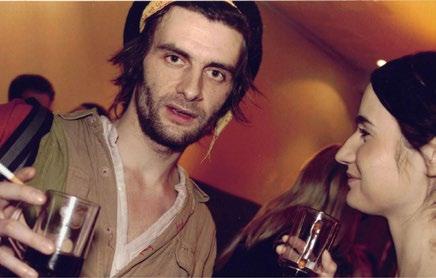

This summer, Helmut Jänes thoroughly organised the PÖFF archive and photo albums, as a result of which anyone interested can now go to the cosy PÖFF office to get acquainted with the festival archive. Apart from photographs, PÖFF catalogues and other informational publications (flyers, programmes, information materials) have also been catalogued over the years. However, a modest capture from the film rolls is Helmut’s special favourite, dating from 2001. “Such boxes with 35 mm film copies took up a whole room in
the festival office. They often formed labyrinths several metres long and were eventually moved on to the cinemas. Each box weighed well over 25 kilograms. You can imagine how much sweating was involved to move such piles of boxes from point A to point B. Big thanks to our logistician Tiina Teras, who often took on this job. Such boxes only started to disappear in 2011-2012, when the miracle called DCP began to replace it.”
Here is a selection of the most special archive photos of all time for Helmut and the PÖFF team members. EF
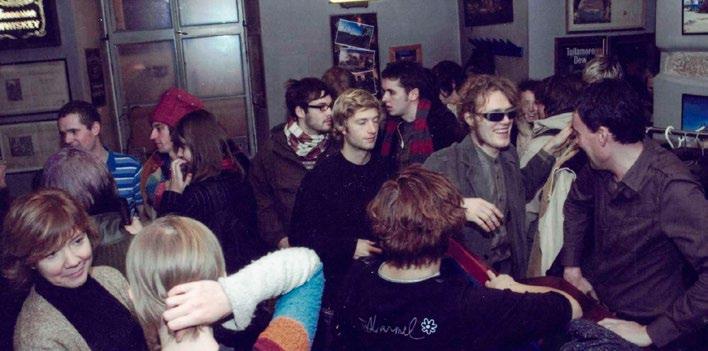



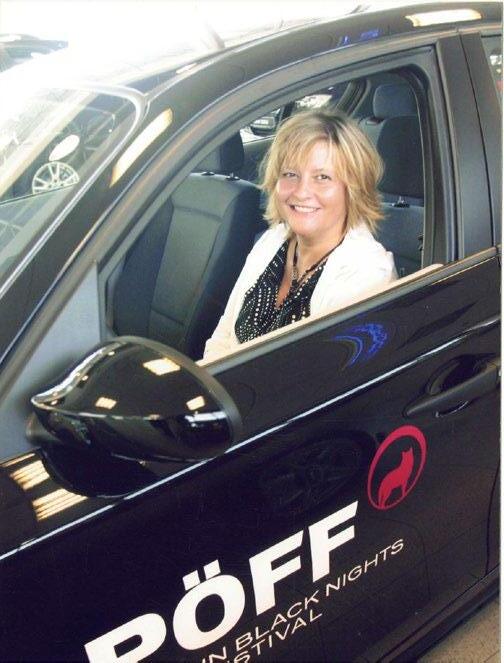

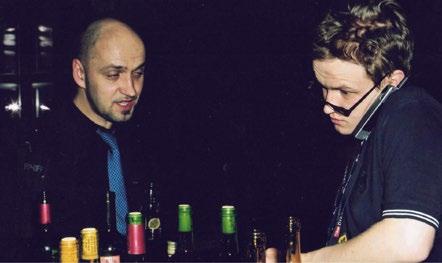




In anticipation of the TV Beats Forum 2024, the strand of Industry@Tallinn & Baltic Event focusing on the drama series market’s needs and trends, Petri Kemppinen and Roosa Toivonen, the newly appointed Co-Heads of the event, share their insights on the evolving landscape of the market.
By Vassilis Economou Photo by Marica Rosengård
With over 50 years of combined experience in the audiovisual industry, including roles at Aurora Studios and the Finnish Impact Film Fund, they discuss emerging trends, the significance of authentic storytelling, and innovative strategies to engage both creators and audiences. Their unique backgrounds – Kemppinen’s extensive financing expertise, and Toivonen’s filmmaking roots – underscore their commitment to fostering collaboration and celebrating impactful narratives in the industry.
How do you see global trends in TV series production evolving in terms of themes, formats, and audience preferences, and how are these trends shaping local storytelling and the production landscape?
The demand for crime series has not diminished, but there is clearly more variation in settings and themes. For example, cosy crime has been evolving, and the grittier realities we are living in seem to be leading to the birth of more hopeful stories. Shorter format comedies also appear to be traveling better than before, and historical topics remain popular. Local, nuanced stories with universal resonance still appeal globally, even if the competition is tougher. New technologies and formats, along with shorter running times and episode counts, are likely to be part of tomorrow’s tastes.
How does TV Beats engage with current industry trends, and what initiatives or programs have you implemented to adapt to these changes?

The Co-Financing Market selection reflects what is offered, and the trends mentioned above can be seen there. This year, we have put a lot of focus on screenwriting and financing, but we also showcase several regional projects that have been completed. As AI is certainly a field that we all are – and should be –following, we are also showcasing some tools that can be used immediately.
As global streaming platforms continue to demand more content, how has TV Beats adjusted its strategies to meet this need, and what challenges have you faced in the process?
As streamers are no longer looking for fully financed shows, presenting a co-financing selection in development should serve their needs. The challenge is getting them to consider new talent, as they already have many established production companies on their radar. Many Baltic and Central Eastern European (CEE) countries are relatively small language groups, so there is a specific sweet spot for local-language content, and budgets that can sometimes be developed to appeal to a larger audience rather than only attracting the home market. Through our ‘brutally honest case studies’, we also encourage producers to think outside the box regarding their collaboration with other countries and financing more ambitious budget ranges.
What are the key highlights of the upcoming TV Beats Co-Financing Market, and how do you envision its impact on collaboration and funding within the international drama series industry?
The opportunity to present the Council of Europe Co-Development Award is significant and has certainly brought more attention to TV Beats. Our event aims to focus
Petri Kemppinen’s financing expertise and Roosa Toivonen’s filmmaking roots reflect their dedication to collaboration and impactful storytelling in the industry.
on our core regions: Nordics, Baltics, and CEE, while enhancing cross-border cooperation and financing possibilities.
What innovative strategies or new formats is TV Beats exploring to stay competitive in the drama series market, and how have creators and audiences responded to these efforts?
This year, two new screenwriting programs are being presented at TV Beats. The European Writers Club combines established and new writing talent with broadcaster representatives in their Bridging Generations programme. Writers Across Europe, on the other hand, presents a new model of writing in virtual writers’ rooms.
What can attendees expect from the first-ever TV Beats Screening Days, and why do you see it as important for sales agents, distributors, and local industry professionals?
Markets often focus on pitching and showcasing series in development but don’t necessarily acknowledge the end result: the completed series, which is a significant achievement. As we lament the slow market and lack of financing, it is refreshing to be reminded that ambitious series are still produced and completed; they might just sink into a large catalogue of some distributors or streamers and not get visibility in our ‘bubble.’ We wanted to celebrate the accomplishment and give decision-makers like broadcasters and other buyers the chance to experience the pilot of a newly completed series on the cinema screen.
How significant is the authenticity of local stories in today’s global TV market, and how does TV Beats support the international

exchange of these stories? Can you share any success stories that highlight this?
Local, authentic stories have been on the rise, and they continue to gain attention. We are proud to present five completed shows from our core region in our Screening Days selection. Some of these are world premieres. For example, Van Fock is a co-production between Estonia, Latvia, and Italy for natural and story-related reasons.
What are the main objectives of the TV Beats Forum, and how does it aim to meet the needs of industry professionals?
We compare the current audiovisual market to a live-action role-playing game with constantly shifting rules, and even the board morphs into a new incarnation from time to time. The only constant is the demand for good content that resonates with the audience; everything else is moving, evolving, and taking new forms. Old models from before COVID, the guilds’ strikes, and the breaking of the peak TV/streaming bubble need adjustment. We provide information, guidance, and discussion about the complex currents our industry navigates, while remembering that it is not just the destination that counts – it is also the quality of life and relationships while getting ’there’.
What future trends or changes do you anticipate in the drama series industry, and how is TV Beats preparing to stay relevant as the landscape evolves?
For producers and production companies to succeed in this line of work, they need to be very aware of the timeline from idea to premiere. If we pitch something today, it might reach the audience in a couple of years. Naturally, we do not have a crystal ball to predict which ‘zeitgeist’ sentiment the content will drop into in the future, but we can observe megatrends and weak signals – and try to deduce from history and data what kind of content may be interesting to develop. Many trends are also ‘pendulum movements’, so AI will be used extensively for some years, in various forms, until some of the audience and filmmakers grow tired of it and return to more traditional ‘handcrafted’ techniques.
How have your personal experiences shaped your leadership at TV Beats, and what advice would you offer to industry professionals and newcomers navigating the series market?
Growing from the early years of TV drama production, to film funding and experiencing the golden era of TV series, to the somewhat more stagnant market today; it is interesting to see how stakeholders’ roles are changing. We try to give space to all aspects of the value chain during TV Beats, inviting people who are willing to share. As mentioned before, we are optimists, leaning slightly into realism – so we believe that good content, good motivations, and good people will always prevail. EF
On the 20th of November, TV Beats Forum, focusing on scripted series as part of Industry@Tallinn & Baltic Event, will launch the first ever TV Beats Screening Days that showcases five outstanding drama series to sales agents, distributors and local TV and film industry professionals.
A WOLF’S PALATE (Lithuania).
Producers:
Daiva VarnaitėJovaišienė and Asta Liukaitytė
Production company: Kino Kultas


OPERATION SABRE (Serbia)
Producer: Snezana van Houwelingen
Production company: Beta Film, This and That Productions
MUTINY (Latvia).
Producers: Andrejs Ekis and Dita Cimermane
Production company: Cinevilla


VON FOCK (Estonia).
Producer: Jevgeni Supin Production company: Zolba Productions
VALHALLA PROJECT (Finland)
Producer: Juha Wuoliojoki Production company: Snapper Films
